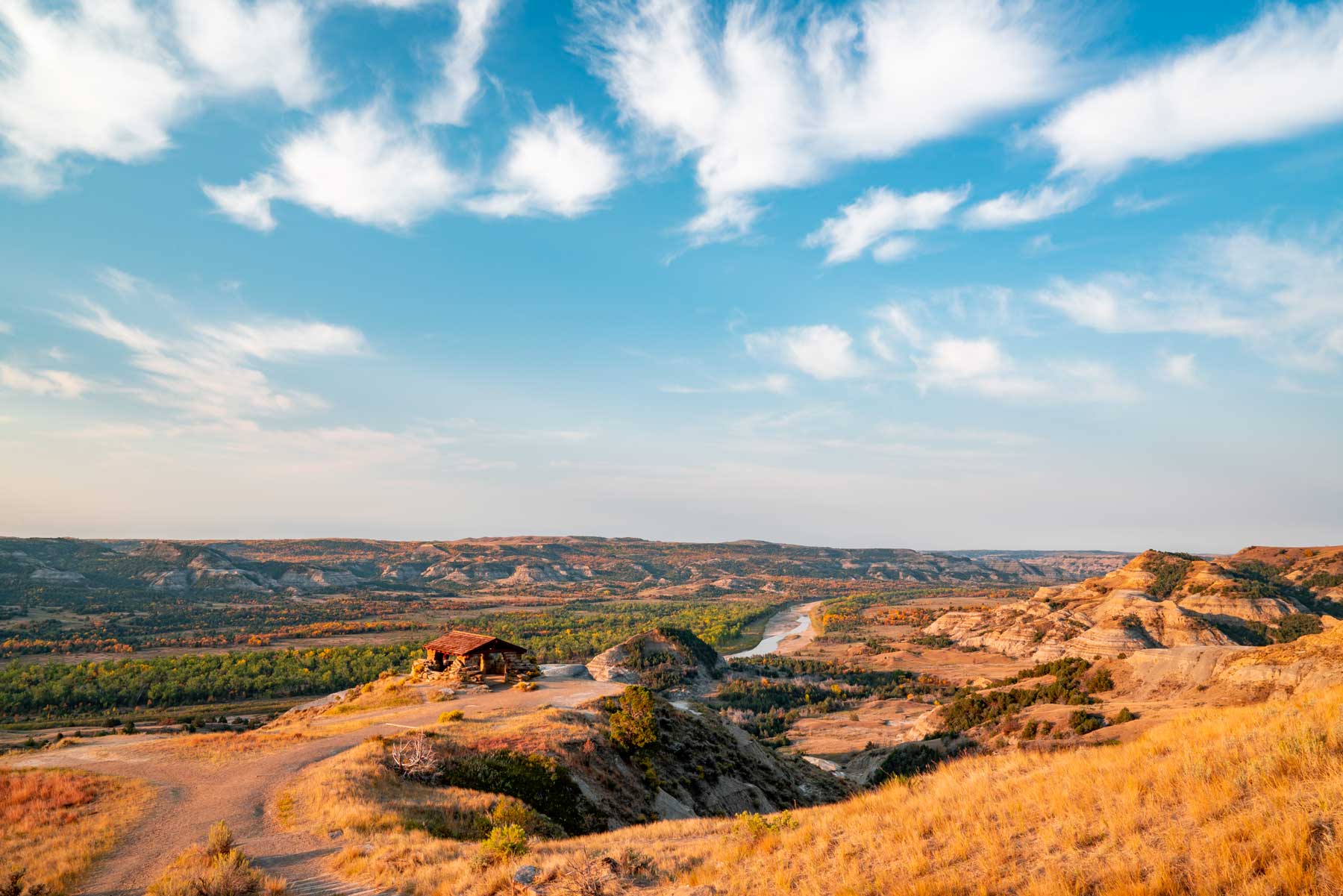
Theodore Roosevelt has long been a bucket list national park for us as the 26th president’s name sake park where he claimed “the romance of my life began.”
This past year we was finally able to make the stars align and made it out to North Dakota in the fall to see the stunning displays of foliage. It was the trip of a lifetime.
As part of the trip, we worked with North Dakota Tourism to create a stunning short film on Theodore Roosevelt National Park that will be premiering in February 2022 (we’ll update this post with the video).

We spent a couple of weeks hiking nearly every trail in the park, exploring the vast overlooks, learning about the park’s history, inspecting the campgrounds, and thoroughly enjoying all that Theodore Roosevelt National Park has to offer.
In this Theodore Roosevelt National Park Guide
- Our Travels to Theodore Roosevelt National Park
- About Theodore Roosevelt National Park
- Things to Know Before You Visit
- Stats About Theodore Roosevelt National Park
- Theodore Roosevelt National Park Map
- Directions & Location
- History of Theodore Roosevelt National Park
- Video
- Weather & Seasons / When to Visit
- Things to Do
- Camping
- Where to Stay – Hotels at Theodore Roosevelt
- Photos of Theodore Roosevelt National Park
In this article we’ll be sharing the most amazing sites (including wildlife), the best things to do in the park, where to stay, where to eat, seasons & weather, visiting the park safely, and more helpful first-hand tips.
We want you to be able to visit Theodore Roosevelt National Park in a way that leaves it great condition for the next folks. We’ll also cover things to do, best places to eat, where to stay, getting to the park, and more.
Ready to start planning the trip of a lifetime? Let’s get started!

Theodore Roosevelt National Park
About Theodore Roosevelt National Park
Encompassing over 70,000 acres, Theodore Roosevelt National Park boasts an stunning array of breathtaking badlands, snaking rivers, diverse wildlife including our national mammal, and colorful canyons.
This is a land teeming with rugged beauty, massive mammals, and epic overlooks.
The park derives it’s name from the 26th President of the United States who spent many formative years in what is now the national park.
“It was here that the romance of my life began.”
Theodore Roosevelt

Things to Know Before You Visit Theodore Roosevelt National Park
Entrance Fees
You can expect $30 per vehicle but if you plan on visiting more than one park this year we suggest you go ahead and purchase the America the Beautiful Pass (which can be found at the entrance gates to most national parks). This pass gets you into all National Parks, Forests, Monuments, and more including 2,000 sites for free after a one time $79 fee.
Leave No Trace
We’re big fans of Leave No Trace, here at MTJP. Want to learn more? Read about the seven principals of Leave No Trace here.
Dogs
Dogs are not allowed on trails in most national parks due to their potentially disruptive presence with the natural ecosystem. The basic rule is they are allowed where cars can go so be sure to check the rules before bringing along your furry friend.
Theodore Roosevelt National Park (Interesting Statistics)
- Location: Medora, North Dakota
- Established: November 10, 1978
- Size: 70,446 acres
- Native Lands: Arikara, Blackfeet, Chippewa, Cree, Crow, Gros Ventre, Hidatsa, Mandan, Rocky Boy, Sioux
- Visitors: 749,389 (in 2018)
- Entrance Fees: $30 per vehicle; $70 annual pass (or $80 for America the Beautiful Pass)
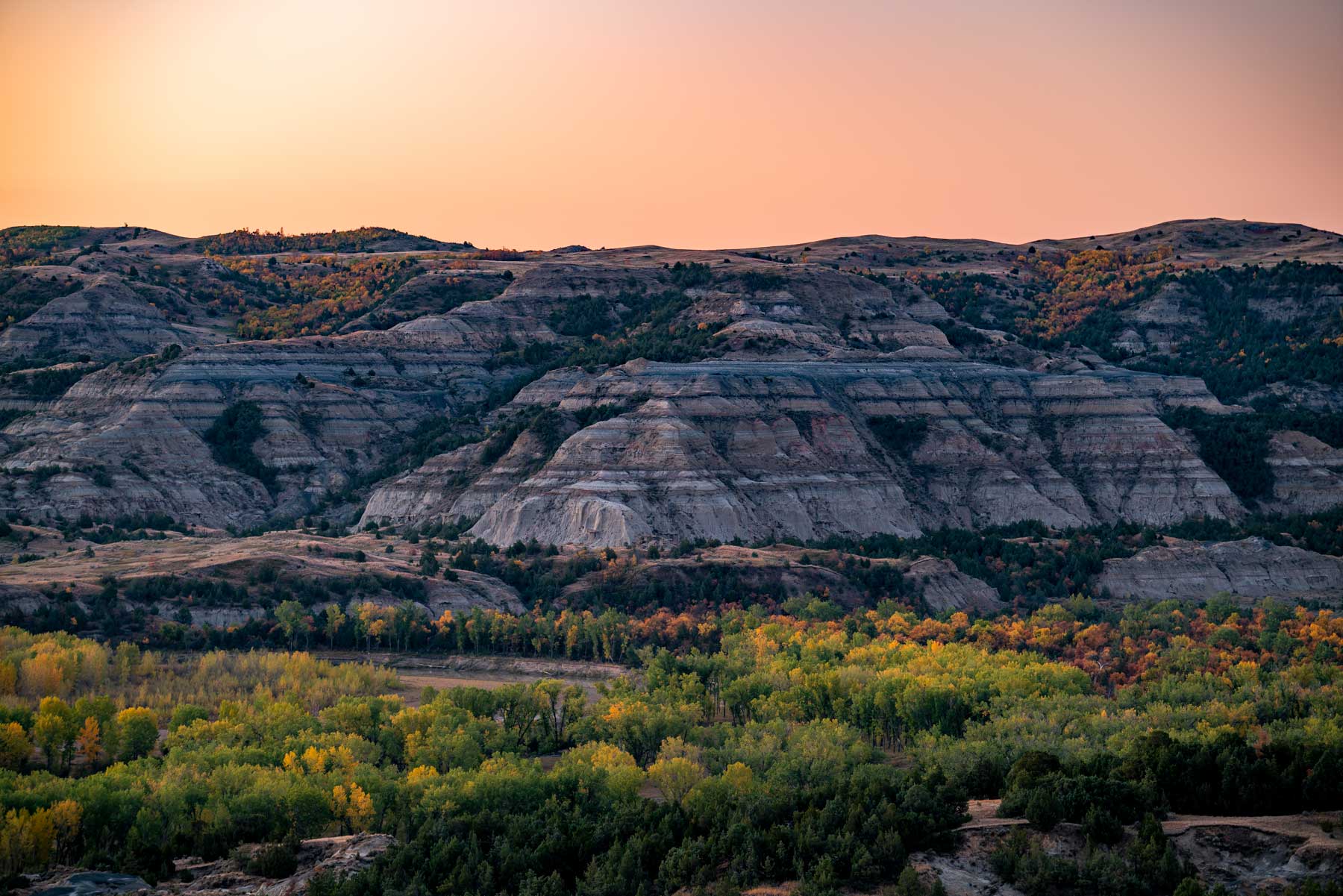
Theodore Roosevelt National Park Map
North Unit

High Resolution Version: Download
South Unit
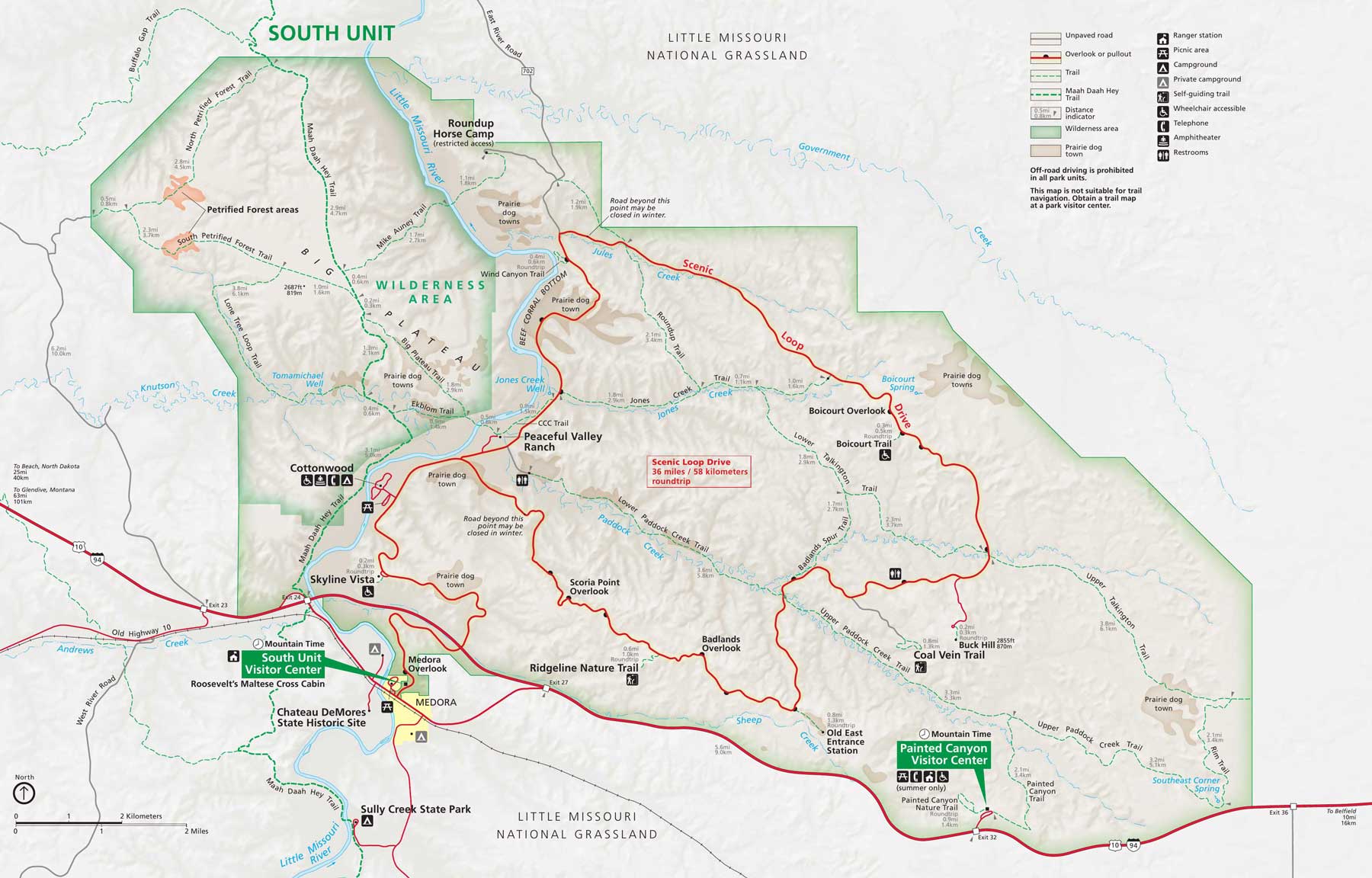
High Resolution Version: Download
Where is Theodore Roosevelt National Park?
Theodore Roosevelt National Park is located on the Western side of North Dakota and headquartered in Medora. The park is split into three units – the North Unit, South Unit, and Elkhorn Ranch Unit.
Drive Times Between Units
The distance between the north and south units is about 70 miles and takes about as many minutes to drive. Drive time between the South Unit & Elkhorn Ranch is about 70 minutes. From the North Unit to Elkhorn takes about 1 hour and 45 minutes.
- South Unit to North Unit – 70 minutes
- South Unit to Elkhorn Unit – 70 minutes
- North Unit to Elkhorn Unit – 1 hour 45 minutes
Getting To Theodore Roosevelt National Park – Directions & Location
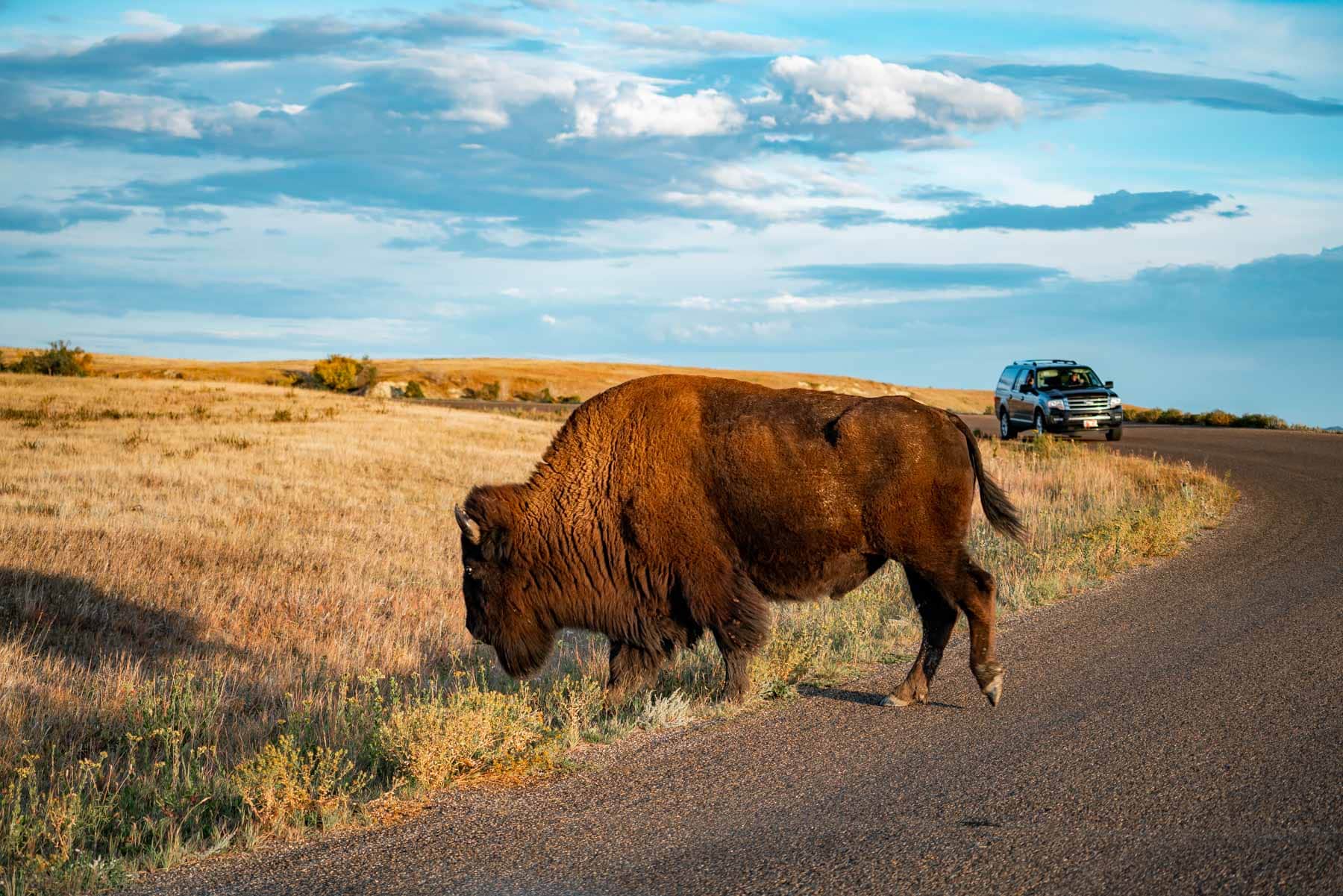
There are many ways to get to Theodore Roosevelt Park – the deciding factors are cost and time.
- Closest Airport: DIK – Dickinson-Theodore Roosevelt Regional Airport (42 miles from the South Entrance)
- Cheapest Airport: BIS – Bismarck Municipal Airport (137 miles from the South Unit)
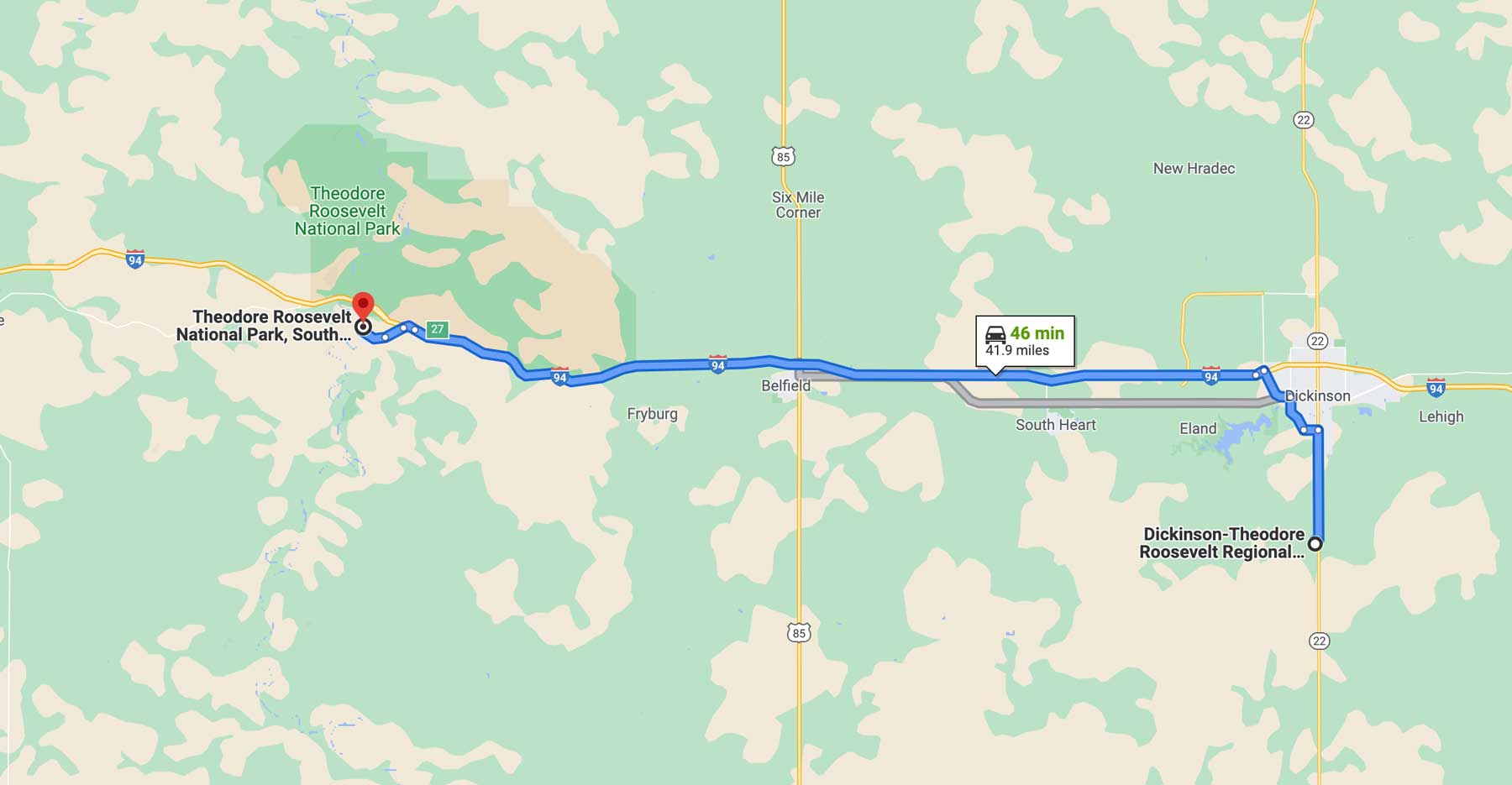
The fastest way to get to Theodore Roosevelt National Park is by plane, flying into Dickinson Airport (DIK). The airport is only 45 minutes from the park and offers quick access via the interstate.
If money is no issue and time is paramount this is the way to go. The only drawback is that the only major airline currently servicing Dickinson is United.

My recommendation is flying into Bismarck which is an extra hour away as more major airlines have service here and rental cars are cheaper and more abundant. Did I mention it’s typically much cheaper as well?
Depending on your access to a car and the distance you’re willing to drive maybe you’re up for a great American road trip (see my national park road trips post).
RELATED: The Ultimate National Parks Road Trip
Theodore Roosevelt National Park History
According to the National Park Service the area of land now considered Theodore Roosevelt National Park was once a swampy wetland full of cypress like trees, fish, and reptiles (about 65 million years ago).
Eventually ash from volcanic eruptions filled the swamps with sediment that was compacted over millions of years into different colored rock layers (I wonder what color our time will be…) and buried.
An ice age came and formed massive glaciers over much of North America. When the glaciers began to melt away the Little Missouri River was formed. As the river began eroding away the softest sediment it left behind amazing formations revealing millions of years of geological history.
This set the stage for the earliest known human inhabitants of the area – Native Americans.
Native Peoples in the Badlands
According to the National Parks Conservation Association, the Hidatsa and Mandan tribes used the lands within Theodore Roosevelt National Park as bison hunting and eagle trapping grounds. The Arikara, Blackfeet, Chippewa, Cree, Crow, Gros Ventre, Rocky Boy, & Sioux tribes are also associated with these lands.
The Lakota referred to the now park area as “mako sica” (mah-koh see-kah) which was translated by Europeans as “badlands.”
Theodore Roosevelt In The Badlands
“I have always said I would not have been president had it not been for my experience in North Dakota”
Theodore Roosevelt
In 1883, at the age of 24, young Theodore Roosevelt was lured in to the Badlands by an acquaintance promoting the area as prime ranch lands. His aim then was to kill a bison before there were no more left on the continent and to get a taste of the real American west.
Upon arriving he was quickly mesmerized by the otherworldly landscapes and natural beauty of the area. The clean air was also a great remedy for his chronic asthma.
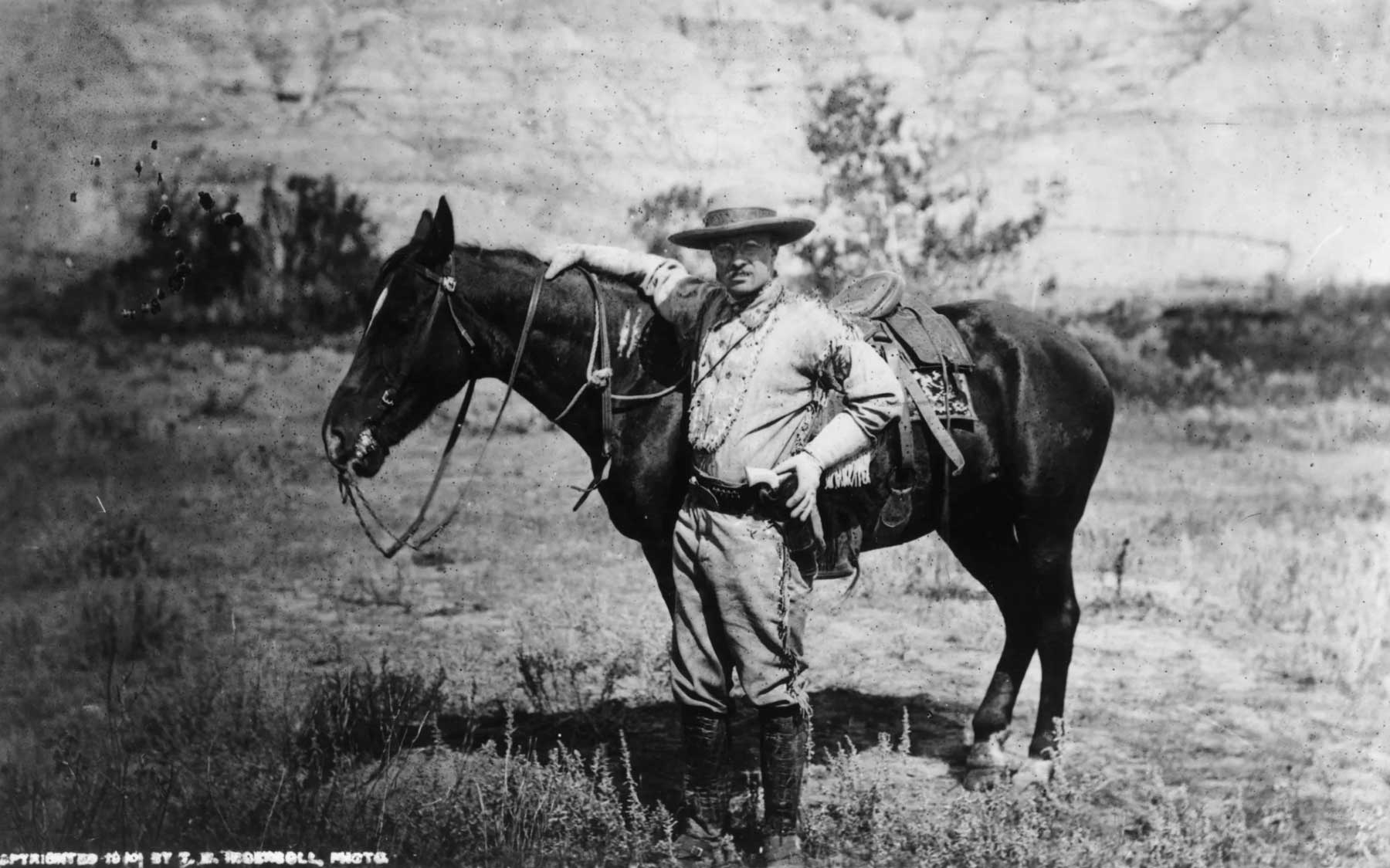
The Maltese Cross Cabin
After spending a few weeks in the area hunting (and killing his first bison) he decided to purchase the Chimney Butte Ranch for $14,000. As the ranch’s official brand, the Maltese Cross was the name that the cabin Roosevelt had built on the property as a temporary home.
The cabin can still be toured today (after taking a trip to St. Louis for the world fair & Portland, Oregon for the Lewis and Clark Centennial Exposition).
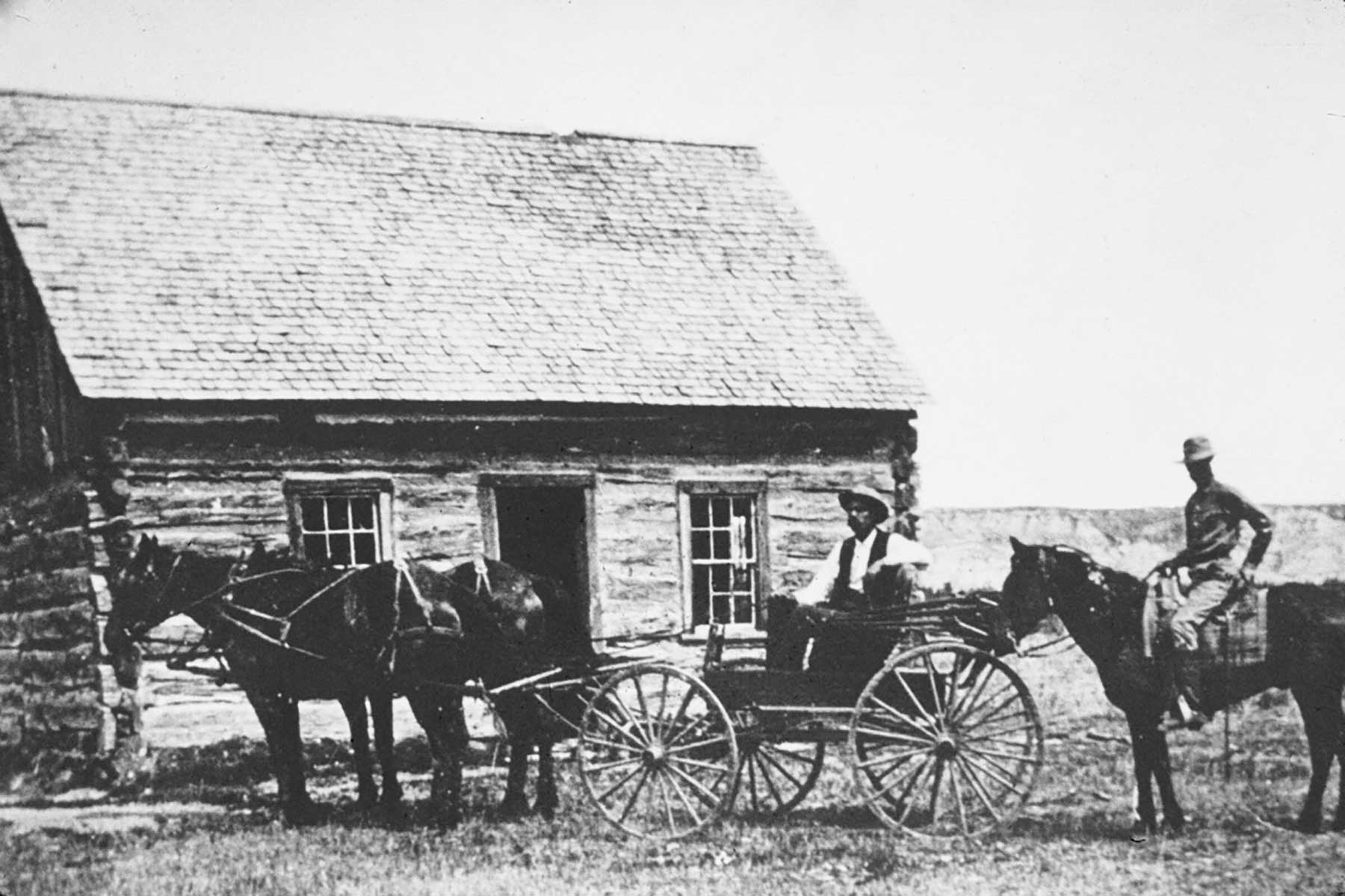
The Elkhorn Ranch
After the unexpected and tragic deaths of his wife and mother on the same day, a devastated Roosevelt returned to North Dakota in 1884 to make ranching his full-time business.
He purchased the rights for a second ranch for $400 and named it Elkhorn. This ranch, which he referred to as his “home ranch”, was where he based his cattle operations.
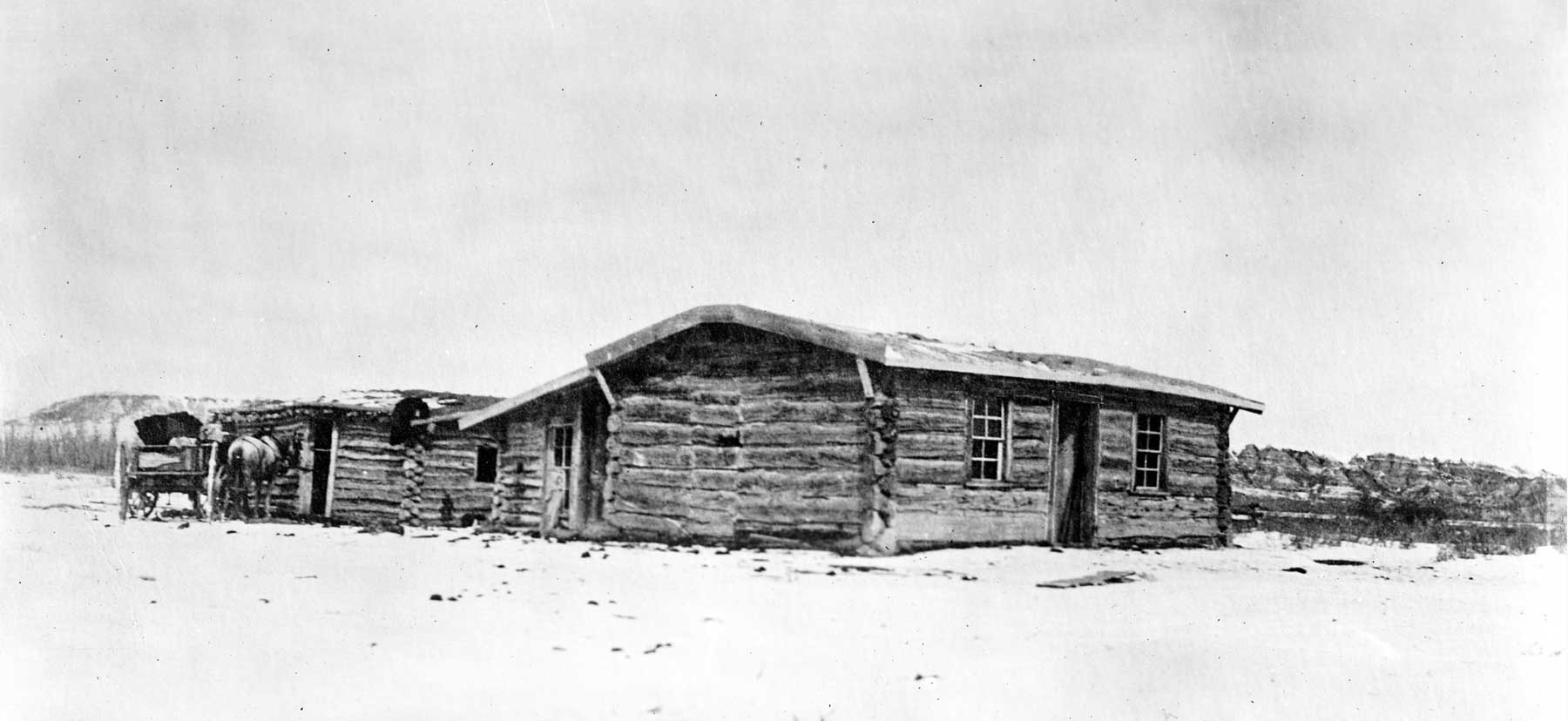
Creation of Theodore Roosevelt National Park
Shortly after Roosevelt’s death in 1919 the search for a memorial location commenced and Medora was selected. An early plan called for a massive 1.2 million acre park but local ranchers complained that the land was too valuable for grazing.
In the 1930s the land dried up due to poor grazing & agricultural practices and with it came the great depression forcing ranchers to sell their land to the government on the cheap.
Little Missouri National Grasslands was established with some of those lands earmarked for a park. The CCC broke ground on what was to become two state park sites in 1934 but work stopped in 1941 with the advent of World War II.
In 1946 after congress voted down inclusion of the lands into the national park system due to not possessing the qualities befitting a national park, the land was transferred US Fish & Wildlife and Theodore Roosevelt National Wildlife Refuge was created.
During the Truman administration the refuge was turned into a National Memorial Park. Finally, on November 10, 1978 President Jimmy Carter signed into law the creation of Theodore Roosevelt National Park.
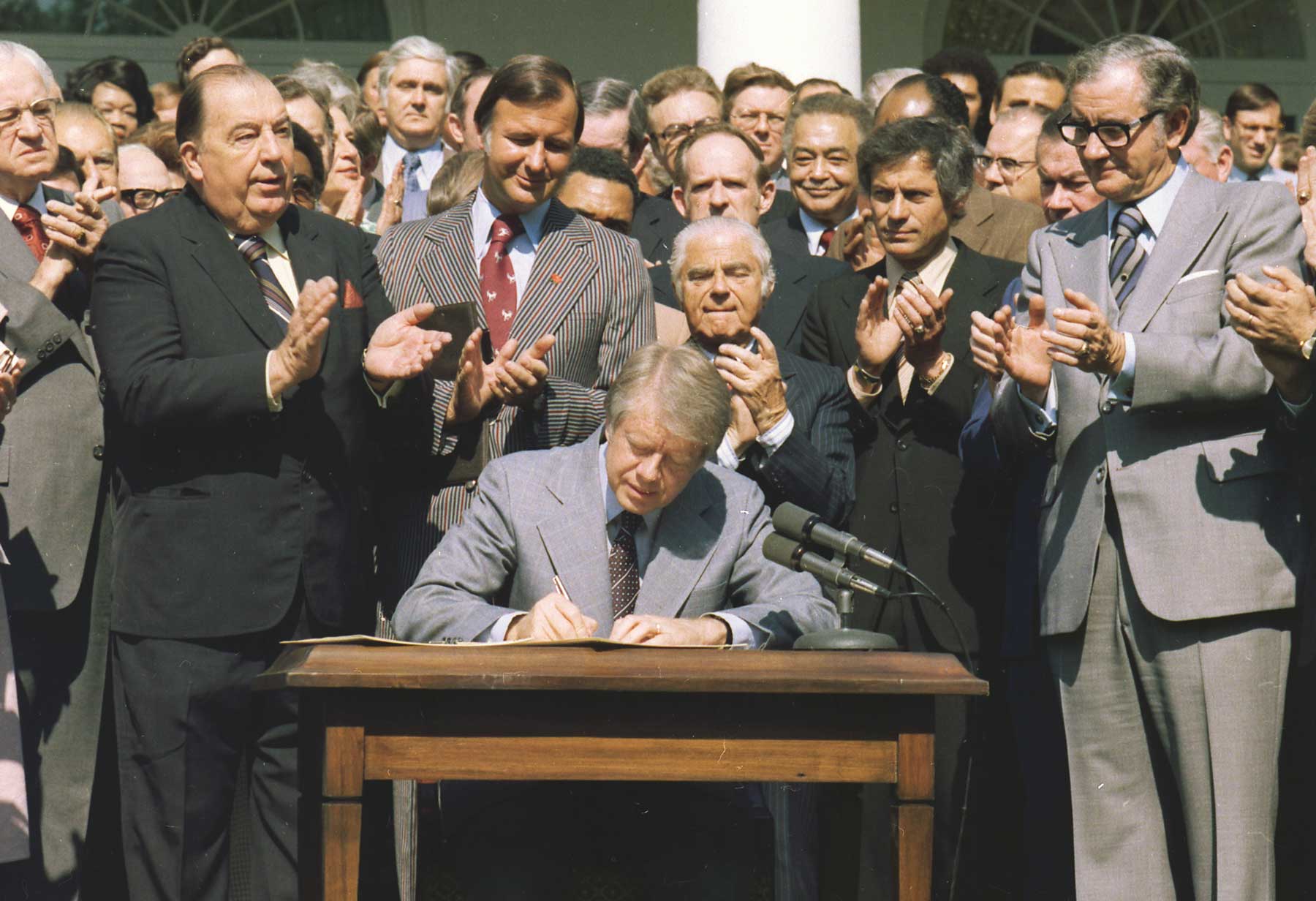
RELATED: Jimmy Carter, Not Roosevelt, Was the Greatest Conservation President
Theodore Roosevelt National Park Video
THEODORE ROOSEVELT National Park 8K is the culmination of weeks spent filming in one of the most spectacular regions of the Dakotas. Encompassing over 70,000 acres, Theodore Roosevelt National Park boasts an stunning array of breathtaking badlands, snaking rivers, diverse wildlife including our national mammal, and colorful canyons.
Journey with More Than Just Parks as we explore a land teeming with rugged beauty, massive mammals, and epic overlooks. This is Theodore Roosevelt. Filmed primarily in stunning UHD 8K.
To make this film happen we spent weeks in Theodore Roosevelt National Park during October capturing the park in our favorite season, autumn.
RELATED: 14 BREATHTAKING National Park Videos to Inspire Your Next Trip
Theodore Roosevelt Weather & Seasons
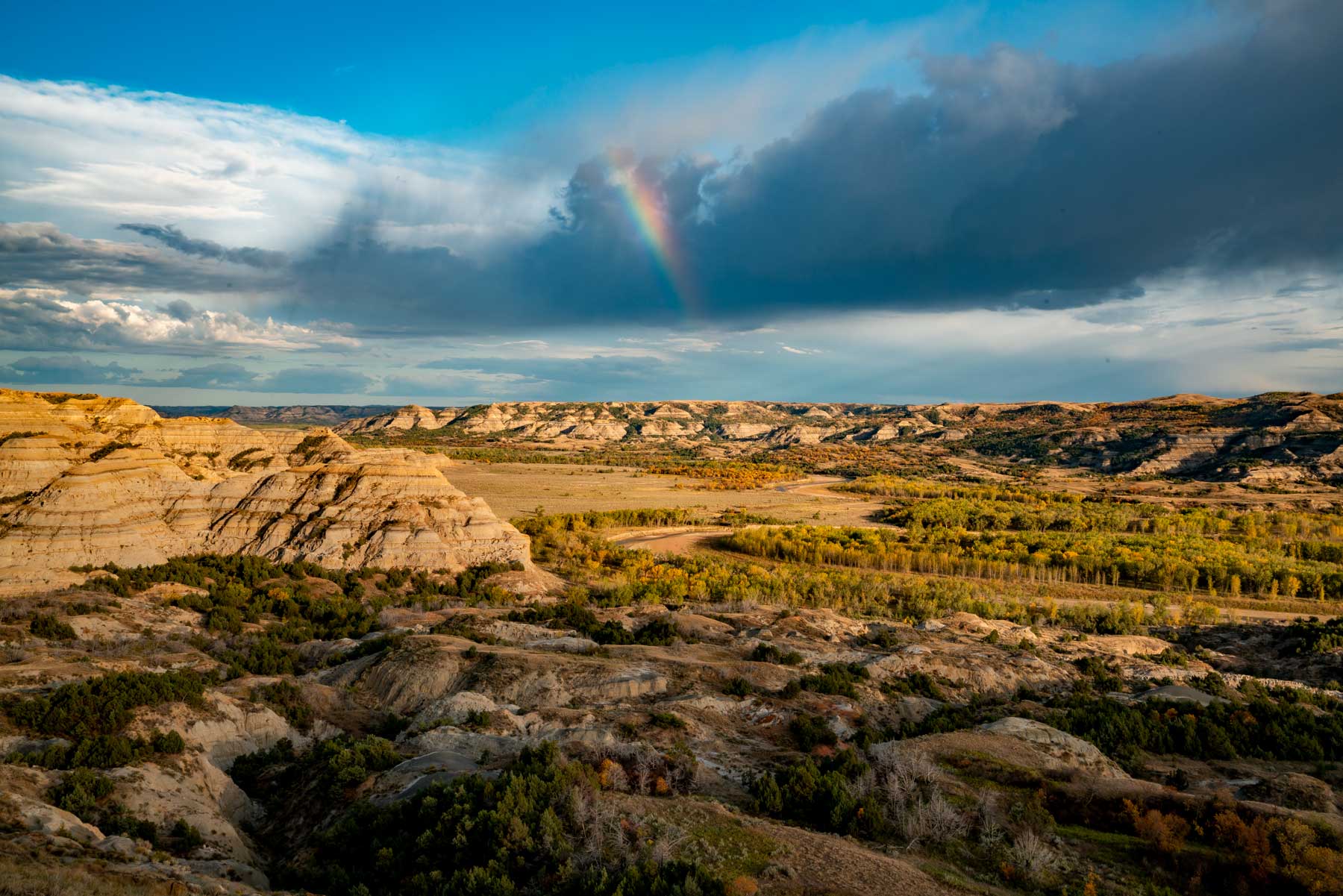
Weather in Theodore Roosevelt National Park can be fairly unpredictable with storm systems moving in seemingly out of nowhere. Always come prepared for a range of weather regardless of what time of year you plan to visit.
Best Time to Visit Theodore Roosevelt NP
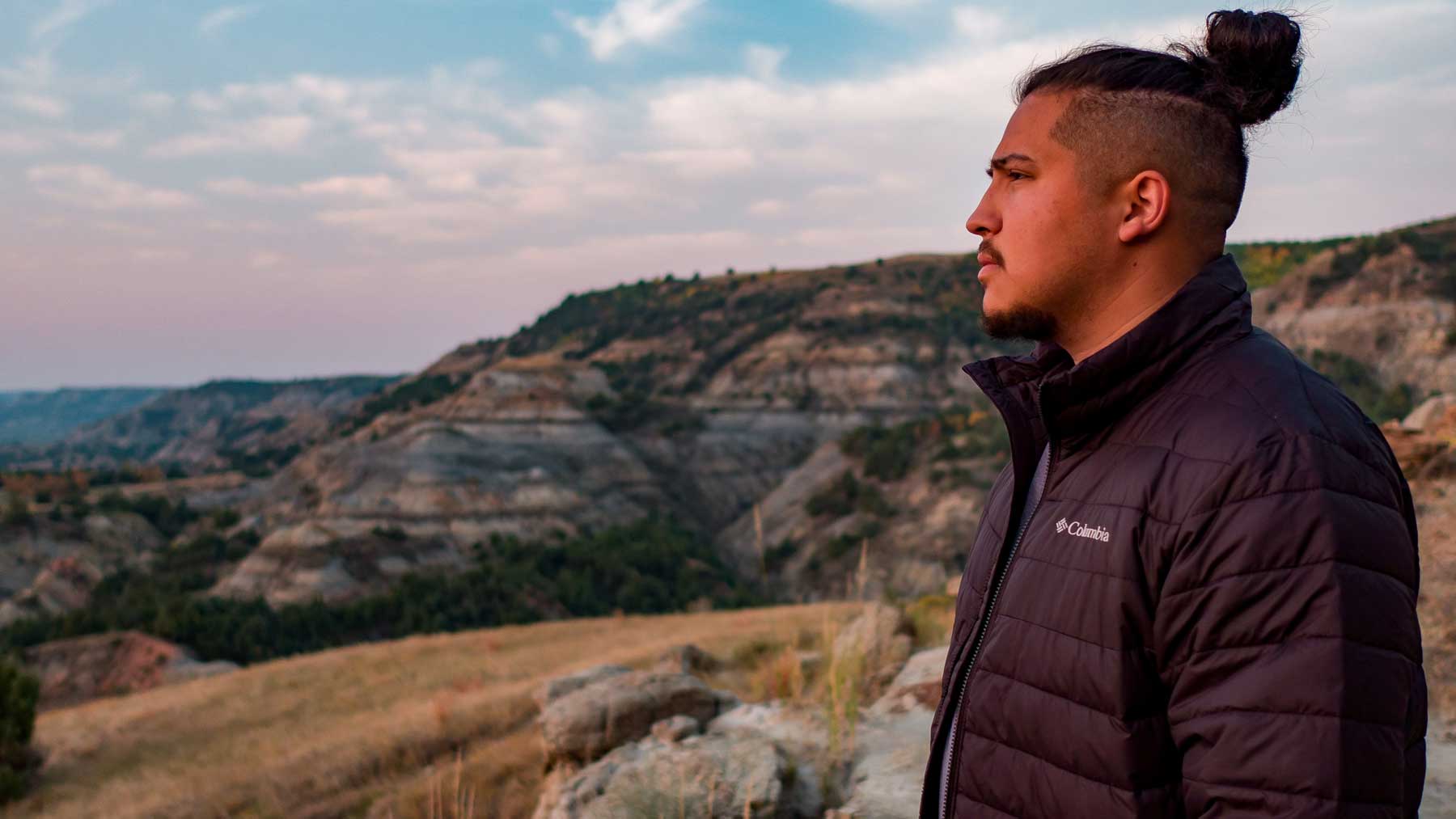
The best time to visit Theodore Roosevelt National Park is in the fall (mid September). Visitation during this time of year is low, temperatures are sometimes a bit chilly but generally mild, and wildlife is on the move.
Spring in Theodore Roosevelt NP
Spring can be a great time to visit Theodore National Park as crowds are down and temperatures are on the rise. I recommend late spring (think June) for the best experience as the park takes a while to thaw out.
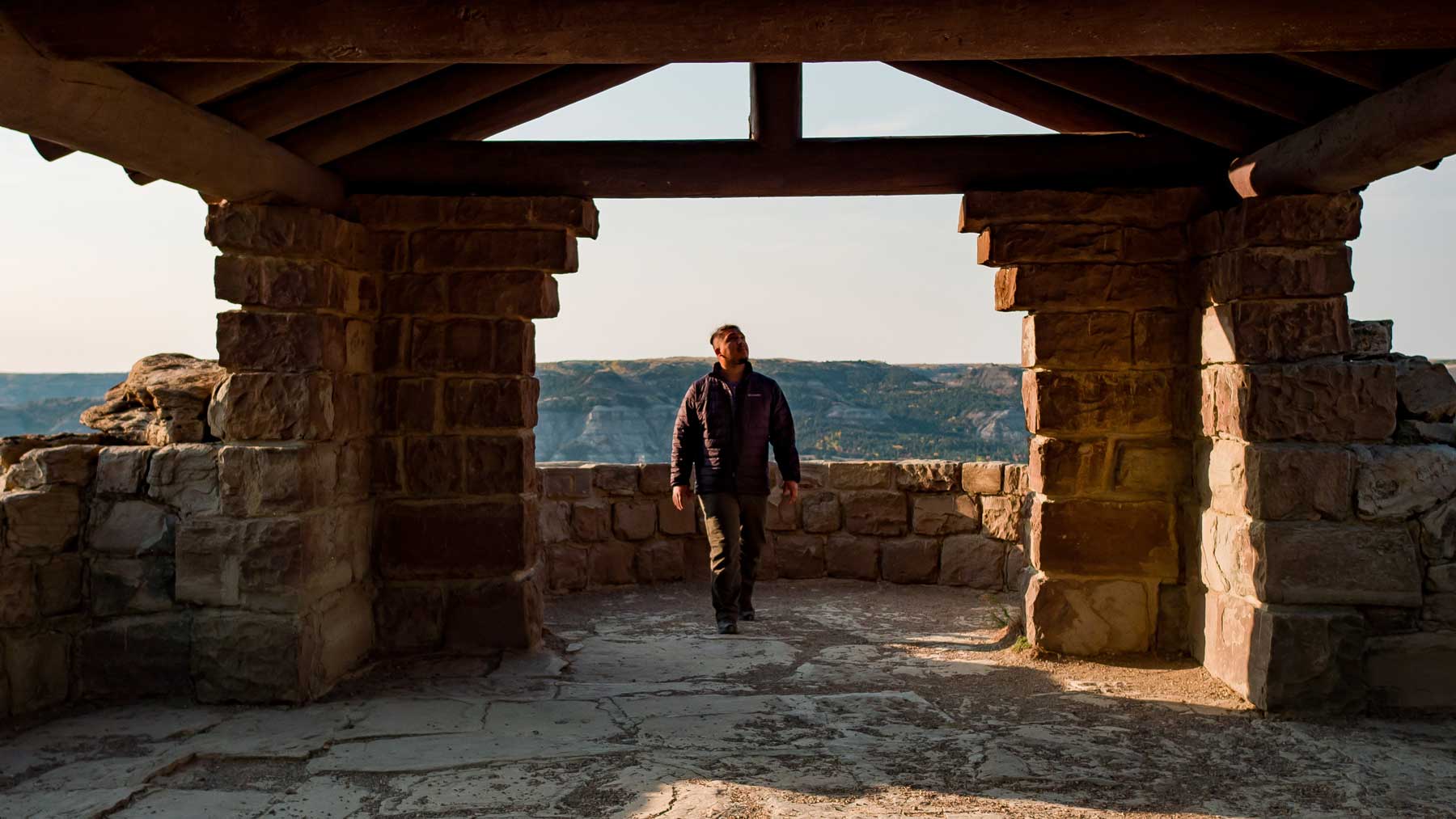
Summer in Theodore Roosevelt NP
Summer is a great time of year to visit Theodore Roosevelt National Park. Temperatures can get pretty hot this time of year so make sure to plan accordingly.
One downside to visiting in summer is the crowds. Summer is when the park sees the majority of it’s visitation. Don’t worry though, there will still be plenty of park to explore without crowds!
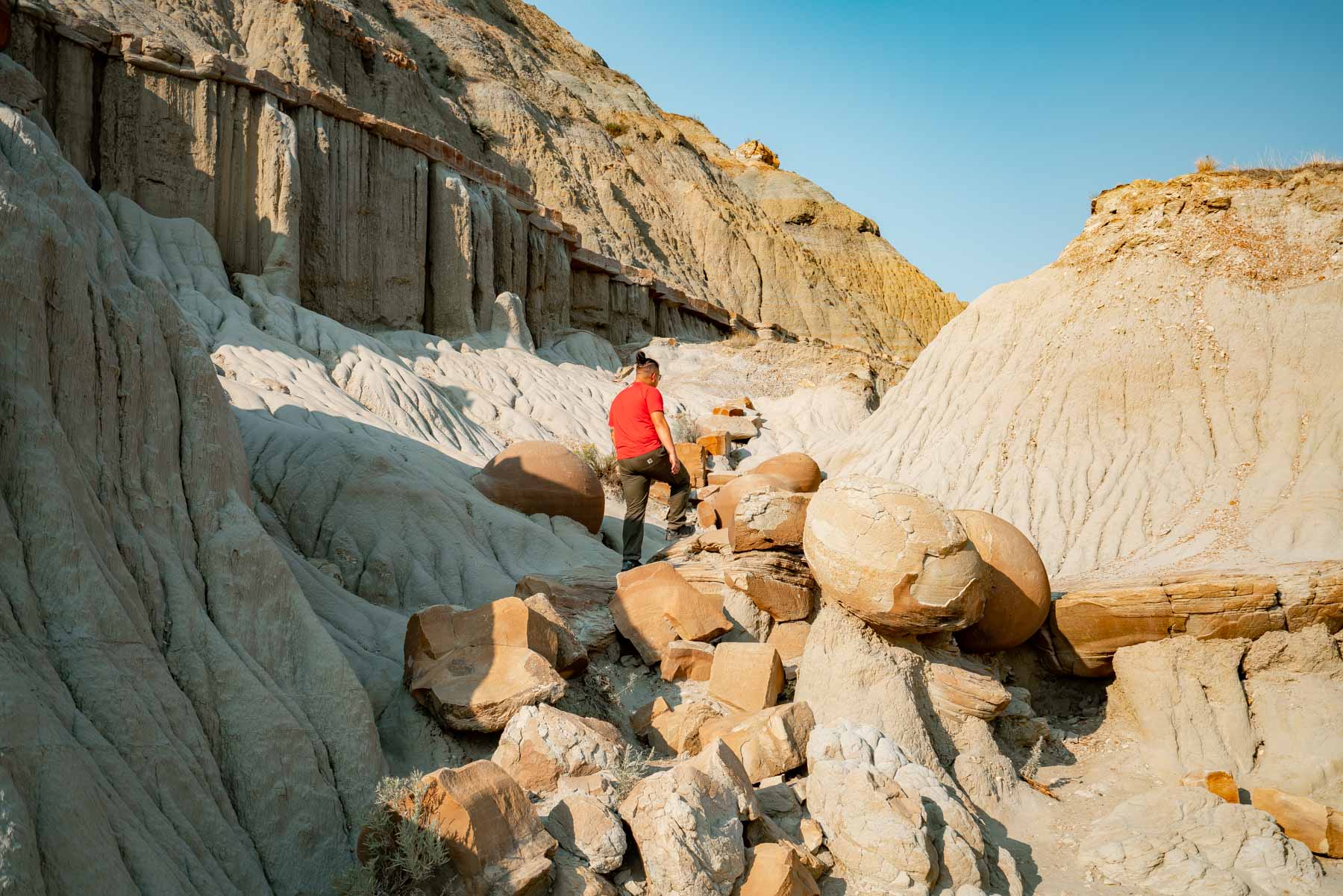
Fall in Theodore Roosevelt
Fall is the best time to visit Theodore Roosevelt National Park as visitation plummets with kids going back to school and the foliage in the park can be spectacular. To have the best chance at catching peak foliage plan your trip around the third weekend of September or so.
RELATED: 10+ Must See National Parks This Fall (A Stunning Guide)
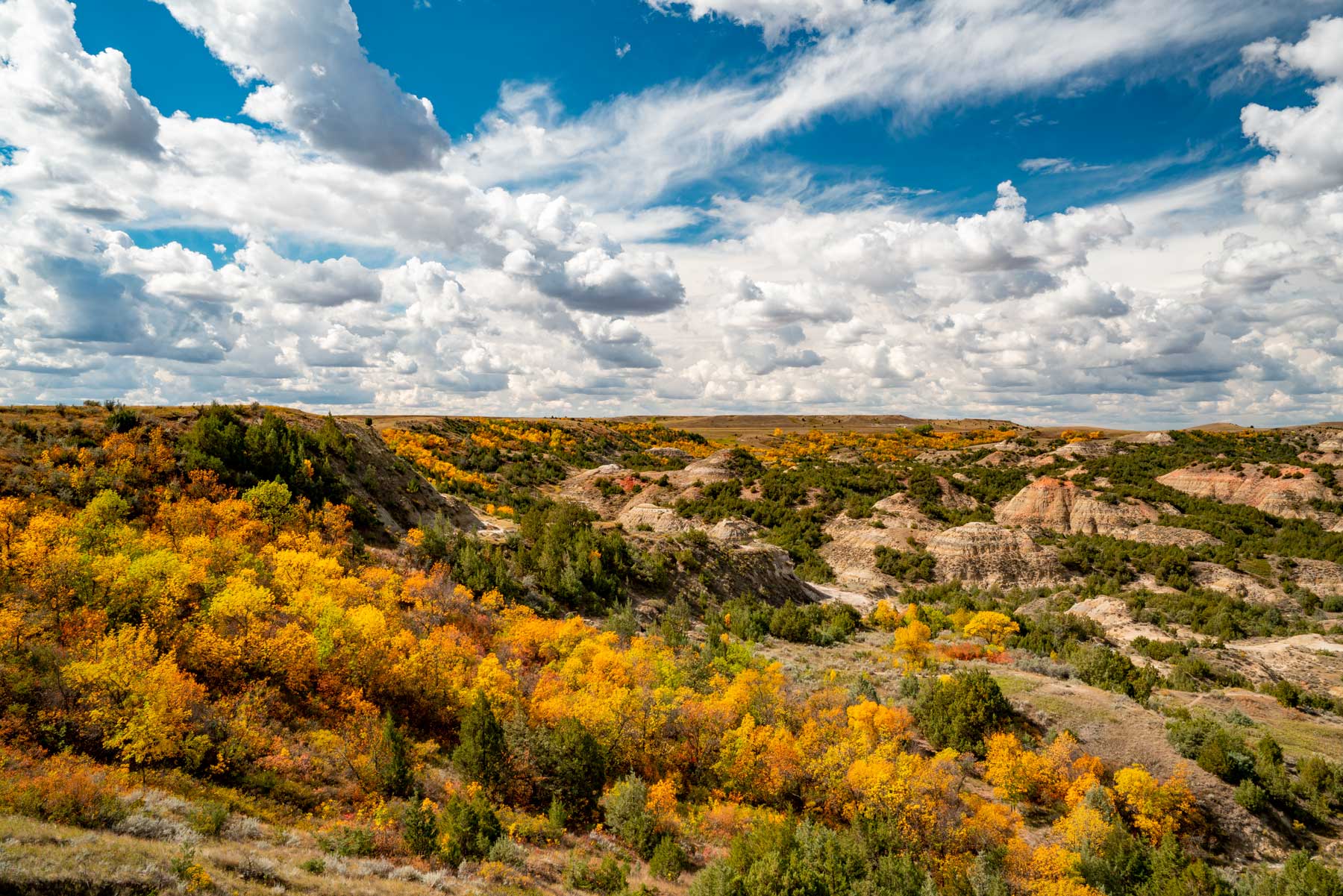
Winter in Theodore Roosevelt
Winter is the least popular time of year to visit the park due to the extreme cold. The average high temperature in January is 28F with lows plunging below 0F regularly.
Things to Do in Theodore Roosevelt National Park
1. See America’s National Mammal, The Bison
Theodore Roosevelt National Park’s most popular resident happens to be our national mammal, the Bison. Seeing one of these majestic creatures in person is truly a sight to behold.
The bison is the largest mammal in North America. Their common name (buffalo) comes from the French who called them “les boeufs” (which means oxen) and over time that being changed to buffalo.
These majestic animals are visible in both the North and South Units of the park. In the South Unit they can typically be spotted shortly after crossing the interstate bridge into the park upon descending into the first canyon, among other places.
In the North Unit, they can typically be spotted immediately after entering the park.
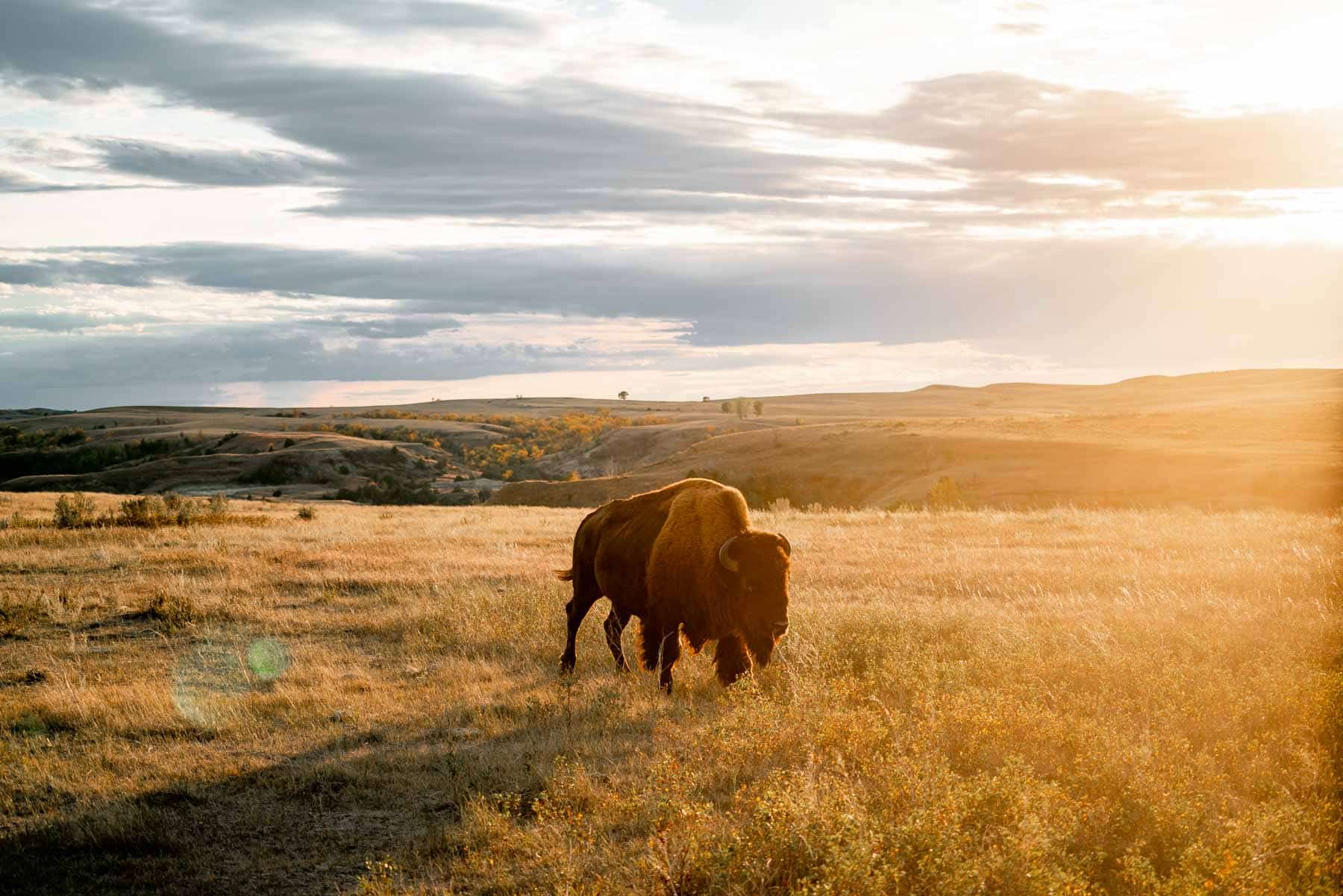
RELATED: 20+ EPIC Things to Do Theodore Roosevelt National Park (+ Photos)
Make sure you give wildlife distance in the park, especially bison. If a bison crosses the road in front of you – stay in your car. Your actions not only put yourself at risk but the bison as well. Be sure to go over the National Park Service’s 7 Ways to Safely Watch Wildlife before your visit to Theodore Roosevelt.

2. See a sunset from River Bend Overlook
Perhaps the best place in Theodore Roosevelt National Park to see the sunset is River Bend Overlook. Located in the North Unit, this vista offers epic, panoramic views of the Little Missouri River and surrounding badlands.
It’s also a very short walk from the parking lot down to the viewing pavilion.
CAUTION: During our visit I sat and watched the sunset from the grassy hill featured in the foreground. Upon the 10 step walk back to the trail featured in the photo above I encountered a prairie rattlesnake.
I never would have seen it were it not for the tell-tale rattle noise which I found to be reassuringly loud.

3. See a sunrise from Oxbow Overlook
The best place to watch a sunrise in Theodore Roosevelt National Park is Oxbow Overlook. This spot features breathtaking panoramic views of the Little Missouri River Valley that will wow at anytime during the day.
From the overlook there are several trail opportunities including the popular Achenbach Trail. If you look closely into the canyon below you can often spot bison grazing.
Oxbow Overlook is located in the North Unit of the park at the very end of the main park road.
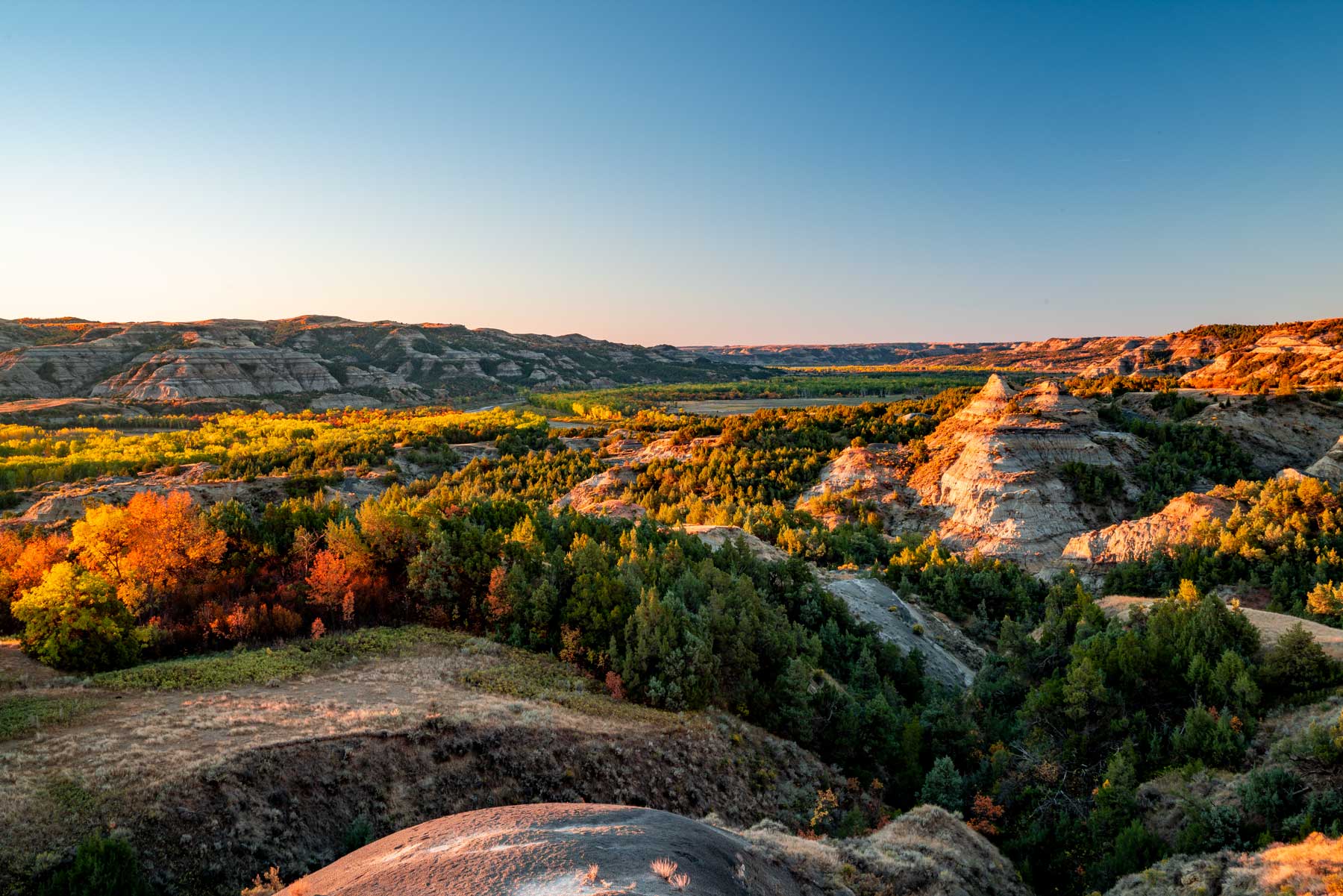
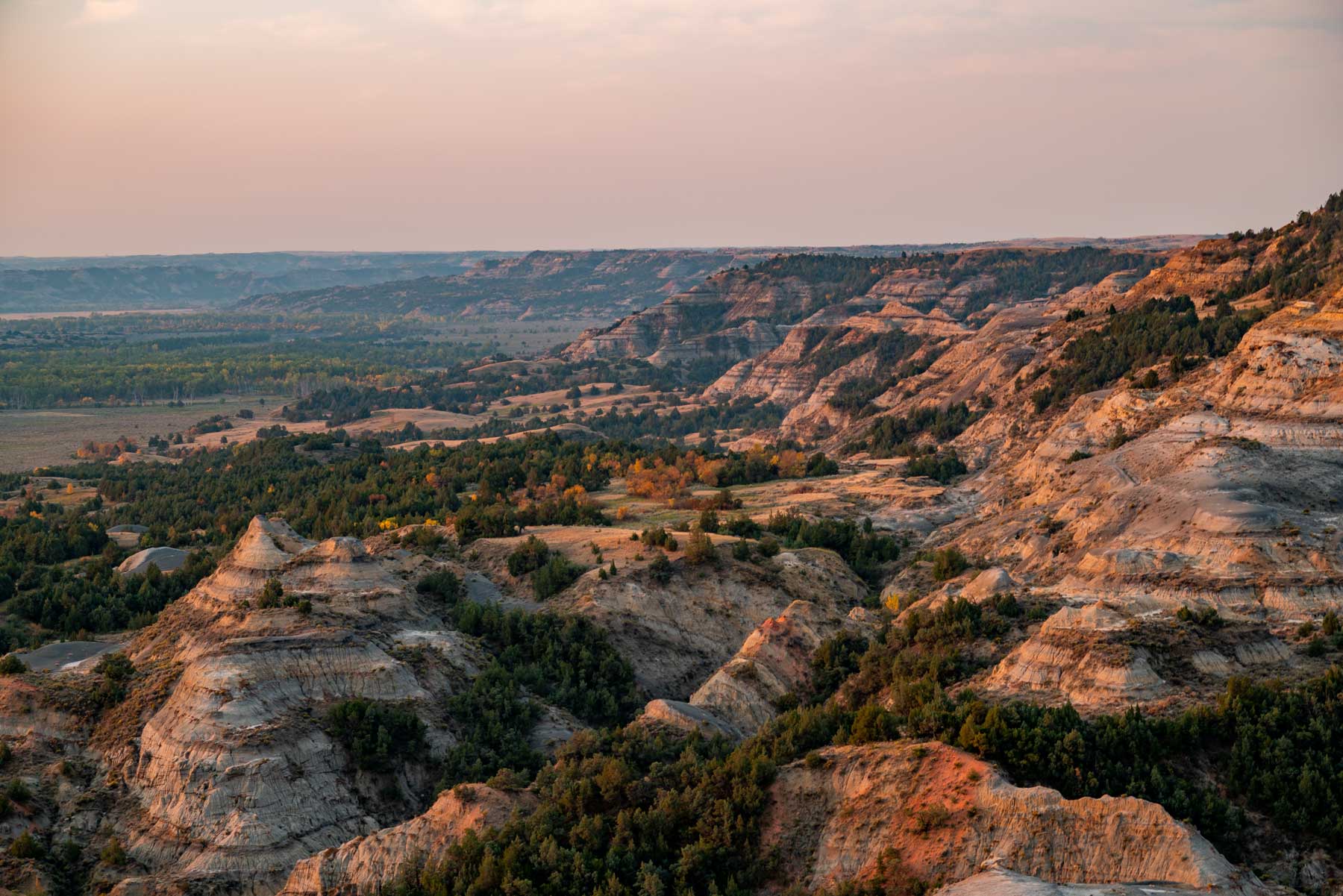
4. Discover the Ancient Petrified Forest Trail
My favorite hike in Theodore Roosevelt National Park (and easily one of the highlights of the entire trip) was the Petrified Forest Trail. I almost didn’t hike this trail as I had not read much about it anywhere but had some extra time left on my last day in the park. Boy was I glad I did!
- Length: Depends (1.5 miles each way to either of the petrified forests OR can do 10 mile loop)
- Time: 2-10 hours depending on how long you linger
- Elevation: Maybe 200ft
According to the National Park Service, Theodore Roosevelt National Park has the third highest concentration of petrified wood in the United States. Who knew!
To get to the trailhead you actually have to leave the South Unit of the park and drive down the interstate one stop to West River Rd. Signs (or google maps) will eventually lead you to the trailhead from there.
We opted for the North Trail as we were told by another hiker that had done both that it was far superior – we were not disappointed.
Now I’ve been to Petrified Forest National Park, and absolutely loved it, but the Petrified Forest in Theodore Roosevelt National Park blows the one in Arizona out of the water. The stumps of trees are absolutely massive – some of them more than 6 feet tall and larger!
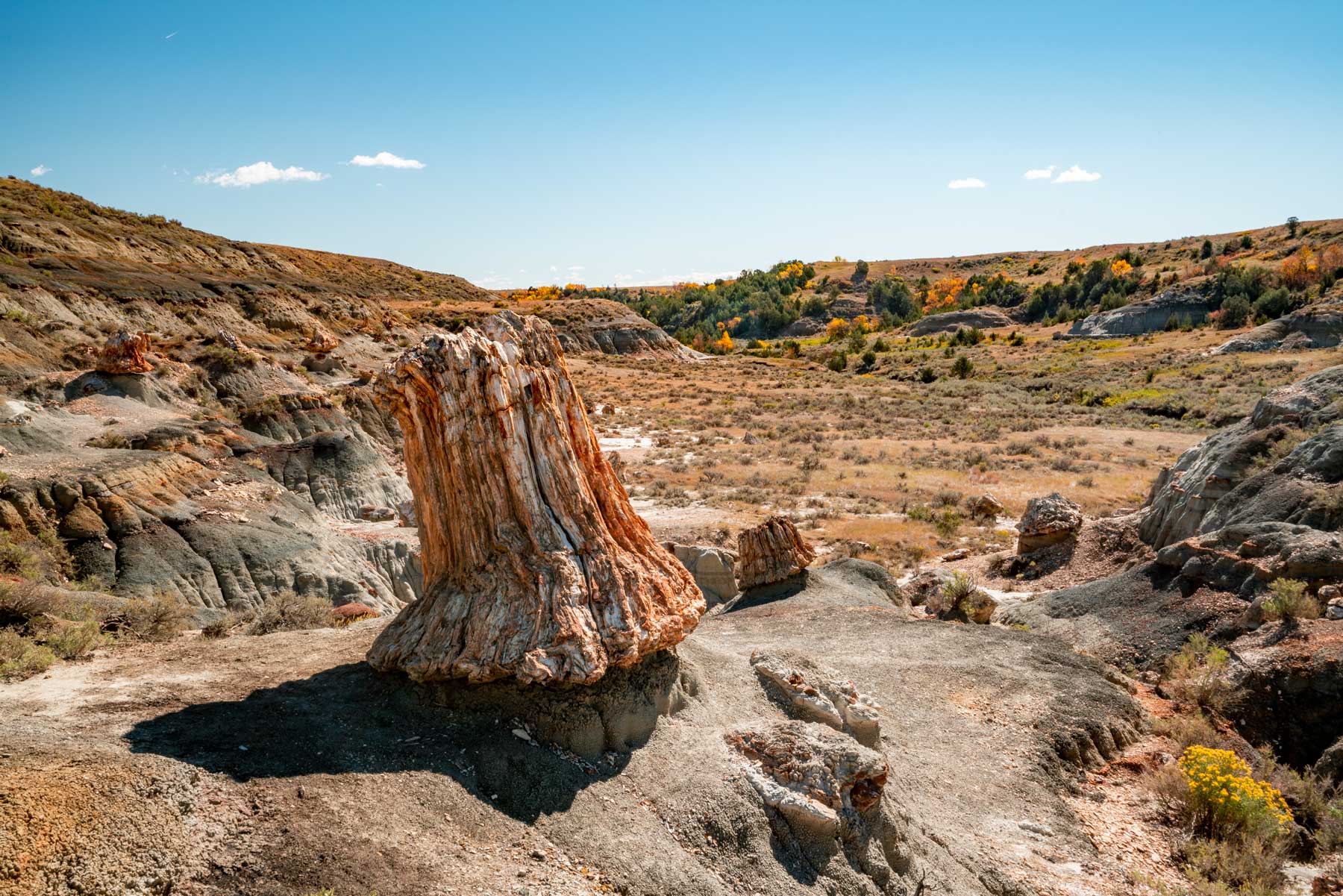

5. Admire the Wild Horses
One of the most sought after animal sightings in Theodore Roosevelt National Park is that of the non-native wild horses that exist in the park today. We saw horses (and lots of them) every day that we were in the park.
If you’re determined to see these animals in the wild, the South Unit is your best bet. We saw them most often near the Coal Vein Trail. Keep your eyes peeled on the tops of hills and you’re likely to see some.
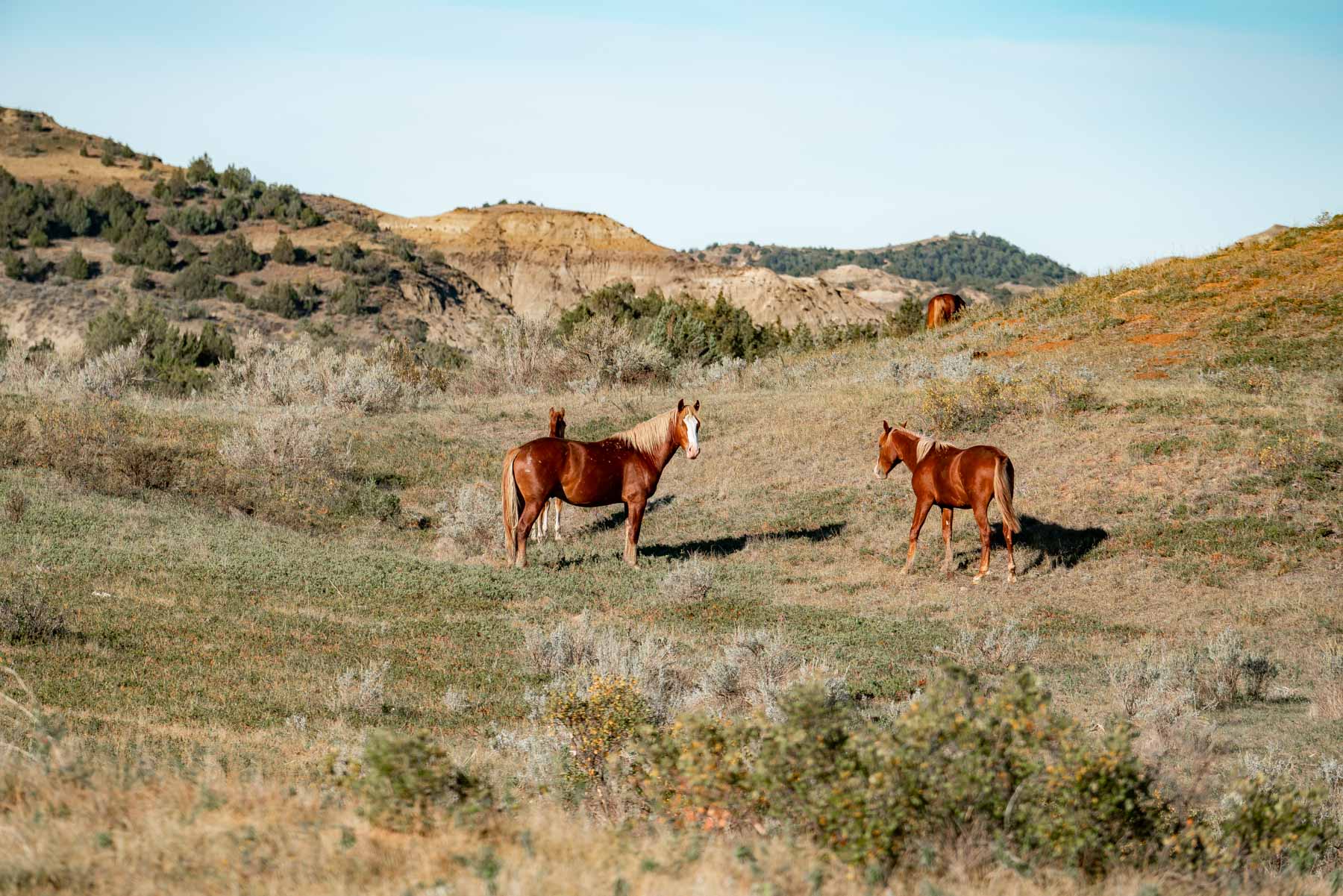
6. Explore the Mysterious Cannonball Concretions
One of the most otherworldly sightings in the park is that of the cannonball concretions. While the park is not exactly sure how these were formed they sure are interested to look at and great for families.
The “cannonballs” are easily spotted at their namesake pullout in the North Unit of the park. A short trail goes around the strange reddish-brown spherical objects.
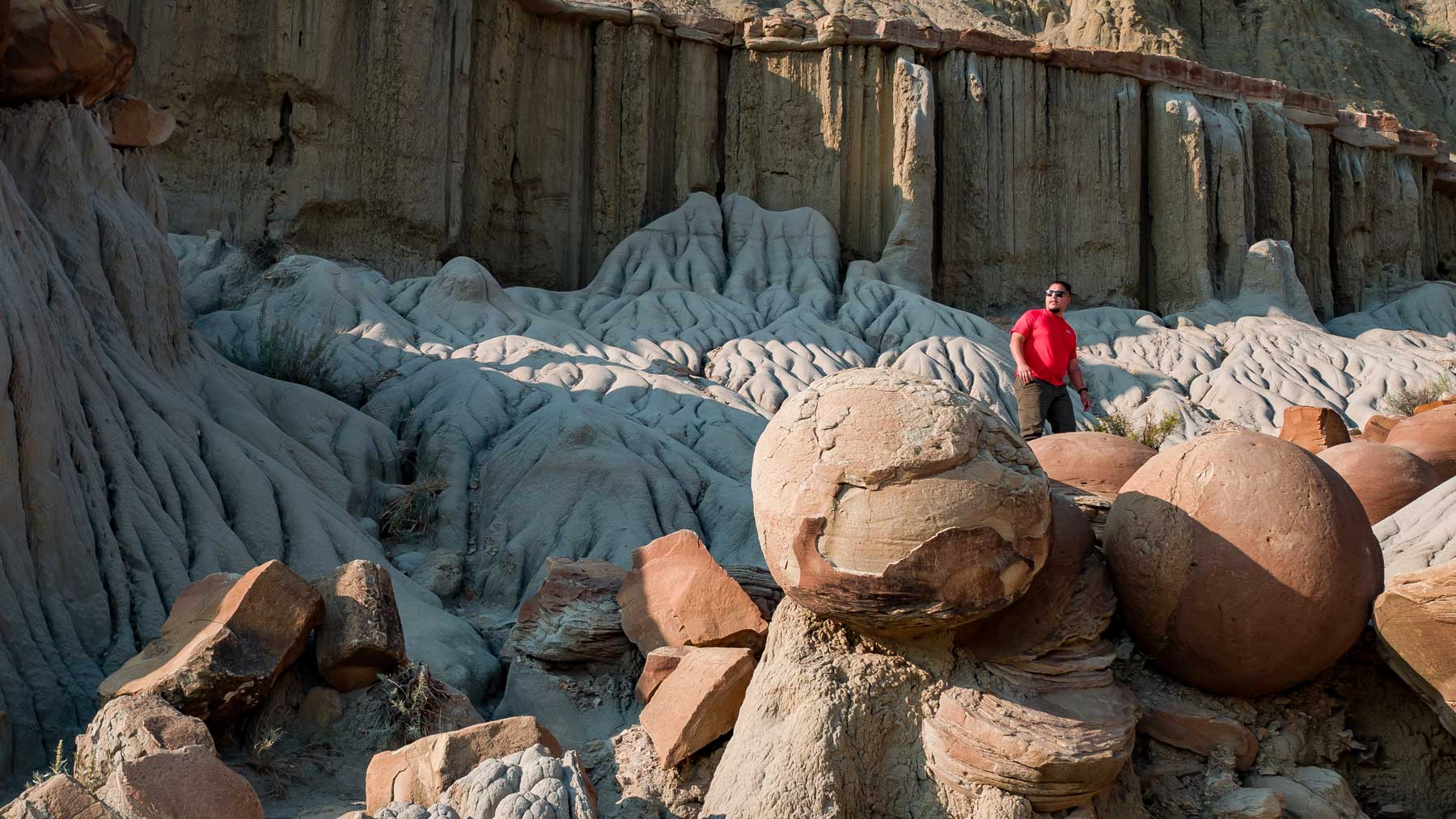
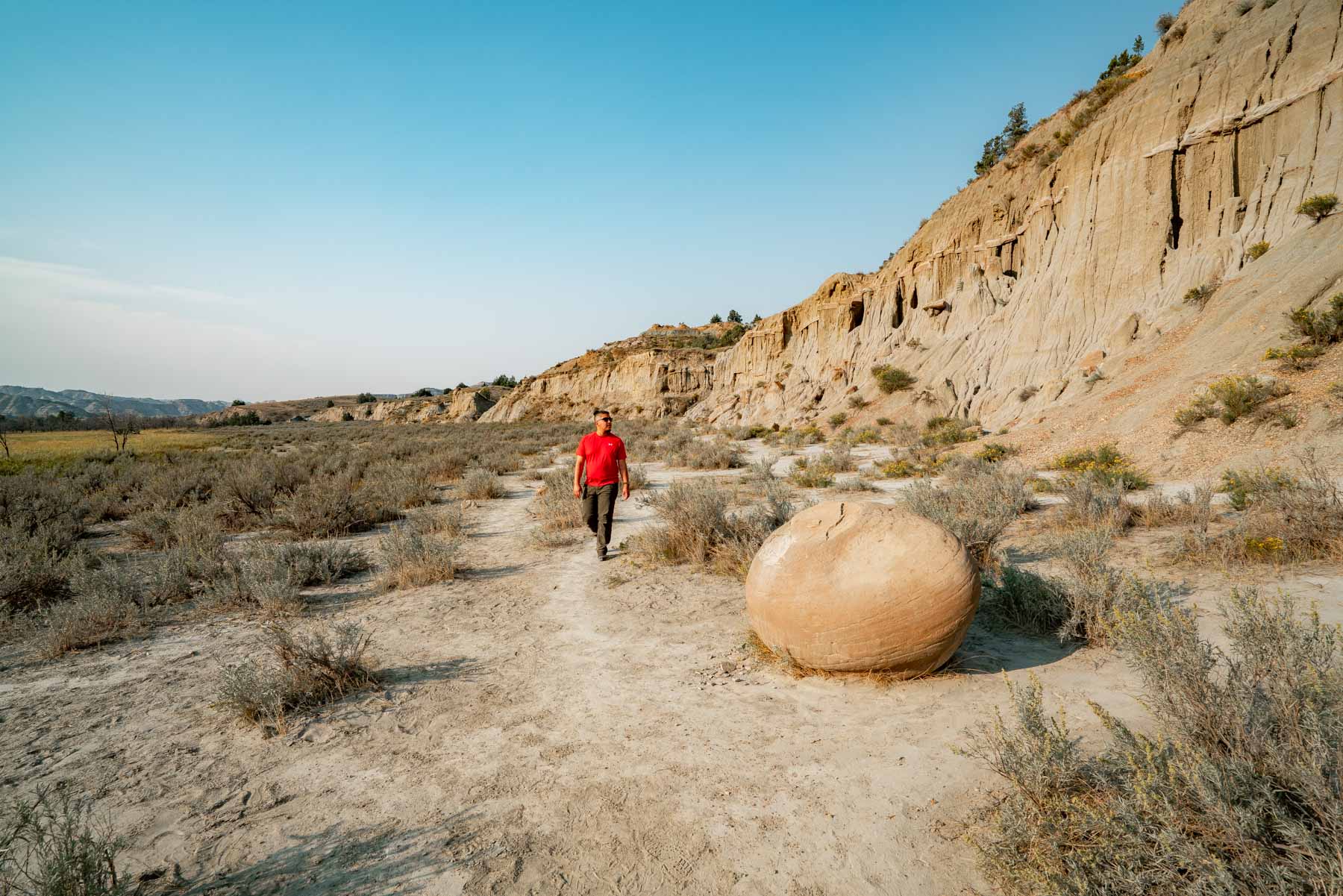
7. Gaze upon the Painted Canyon
Upon first glance I wasn’t sure I had made it to the right place when pulling into the Painted Canyon parking lot. It appeared that I had missed a turned and ended up at an interstate truck stop. Turns out I had, and it was the Painted Canyon Visitor Center.
My expectations lowered but only until I got to the railing and looked out at the vista – wow. There is a trail that goes down into the Painted Canyon area that is definitely worth exploring.
- Length: 4.3 miles (out & back)
- Elevation: 442 ft
- Time: 2-4 hours

8. Enjoy the history of Medora
The gateway to Theodore Roosevelt National Park is the charming town of Medora. The park headquarters are located here along with the entrance to the South Unit of the park.
The town has great dining options, a surprising amount of interesting stores, nice hotels and even nightly shows!
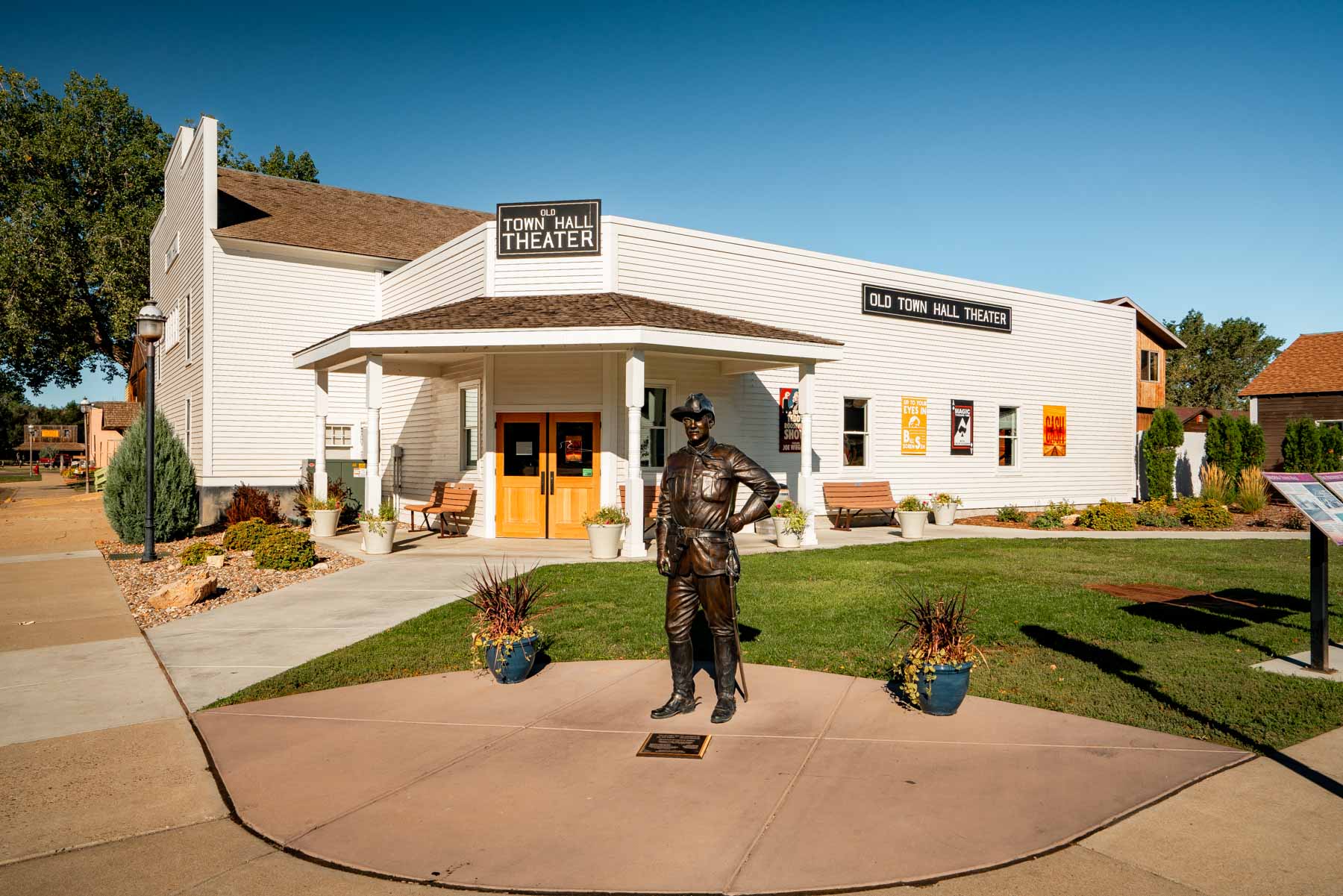
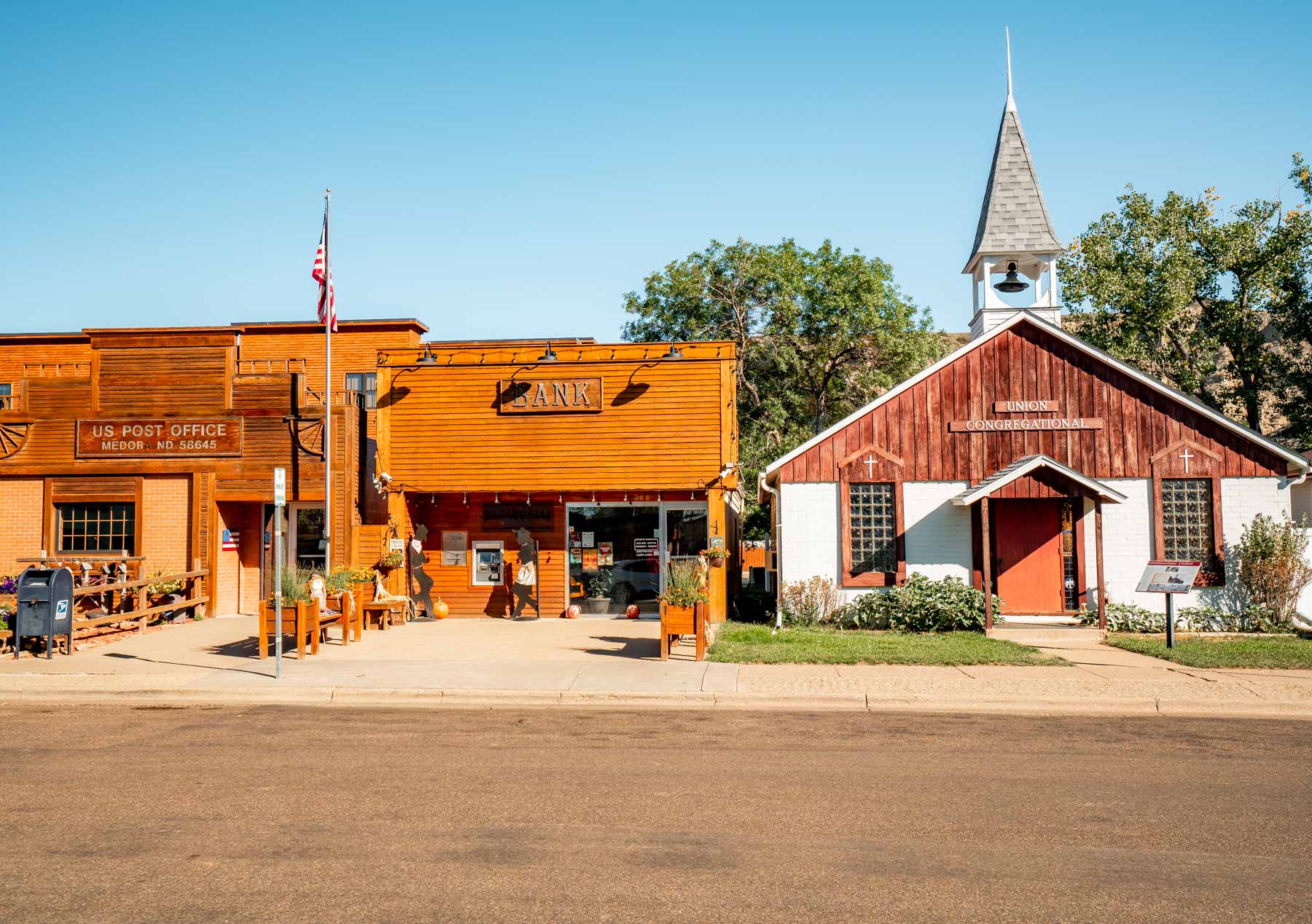
Camping in Theodore Roosevelt National Park
Theodore Roosevelt has exactly two regular campgrounds which have a total of 126 campsites plus one group campground for horses.
South Unit – Cottonwood Campground
Cottonwood campground is situated beautifully right on the Little Missouri River with some sites having river views and river access. Even if you don’t get the river sites, there is plenty to enjoy here including seasonal flush toilets and all the basics including picnic tables and fire pits.
- Sites: 76 campsites
- Season: Year-Round
- Reservations: Half of the sites can be reserved while the other half are first come
- Fee: $14 summer | $7 winter | $30 group
- Wheelchair Access: Yes
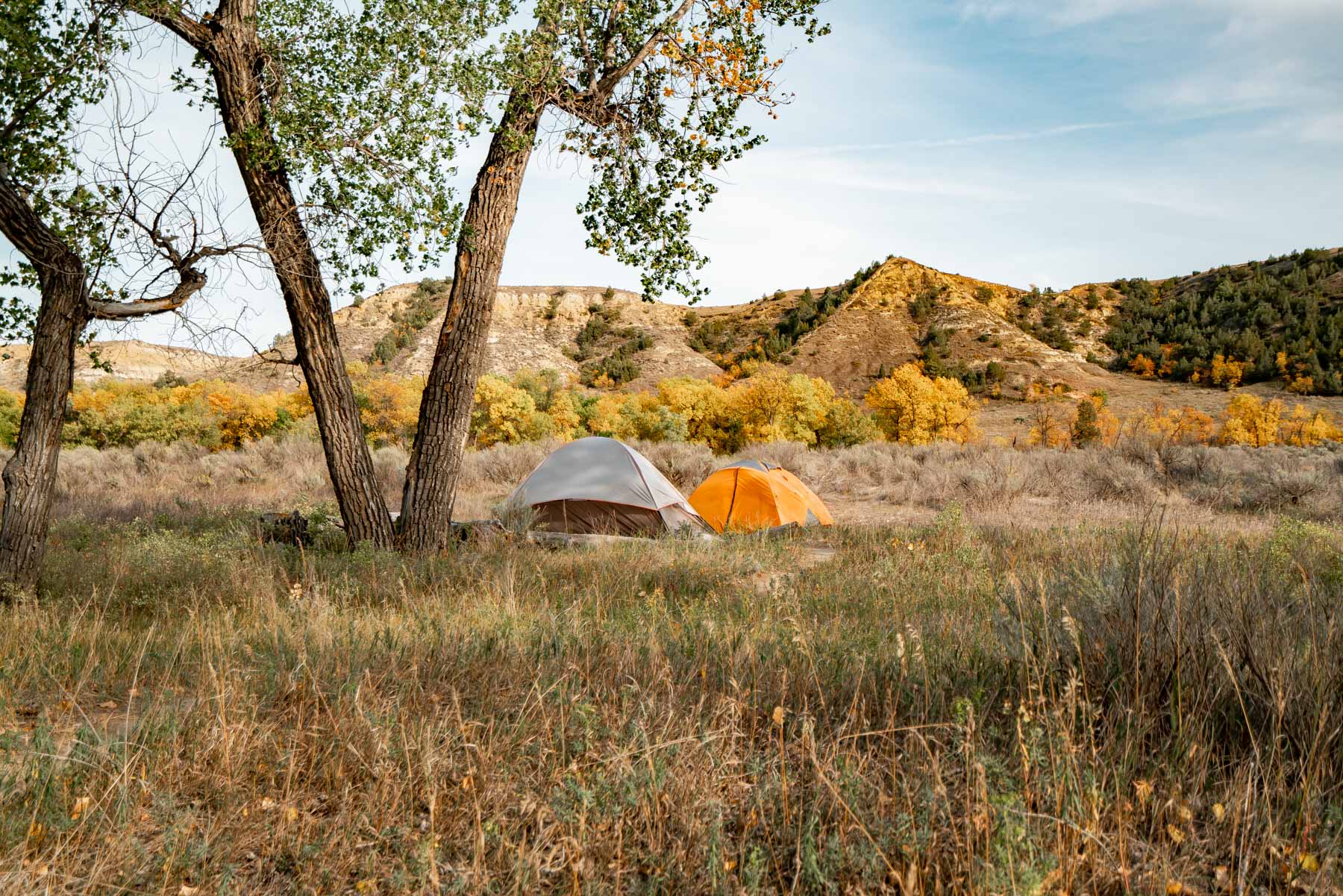
North Unit – Juniper Campground
Juniper Campground is also situated beautifully right on the Little Missouri River with some sites having river views and river access. Picnic tables and fire pits come standard here with seasonal access to flush toilets.
- Sites: 50 campsites
- Season: Year-Round
- Reservations: Group camp only / First Come for the rest
- Fee: $14 summer | $7 winter | $30 group
- Wheelchair Access: Yes
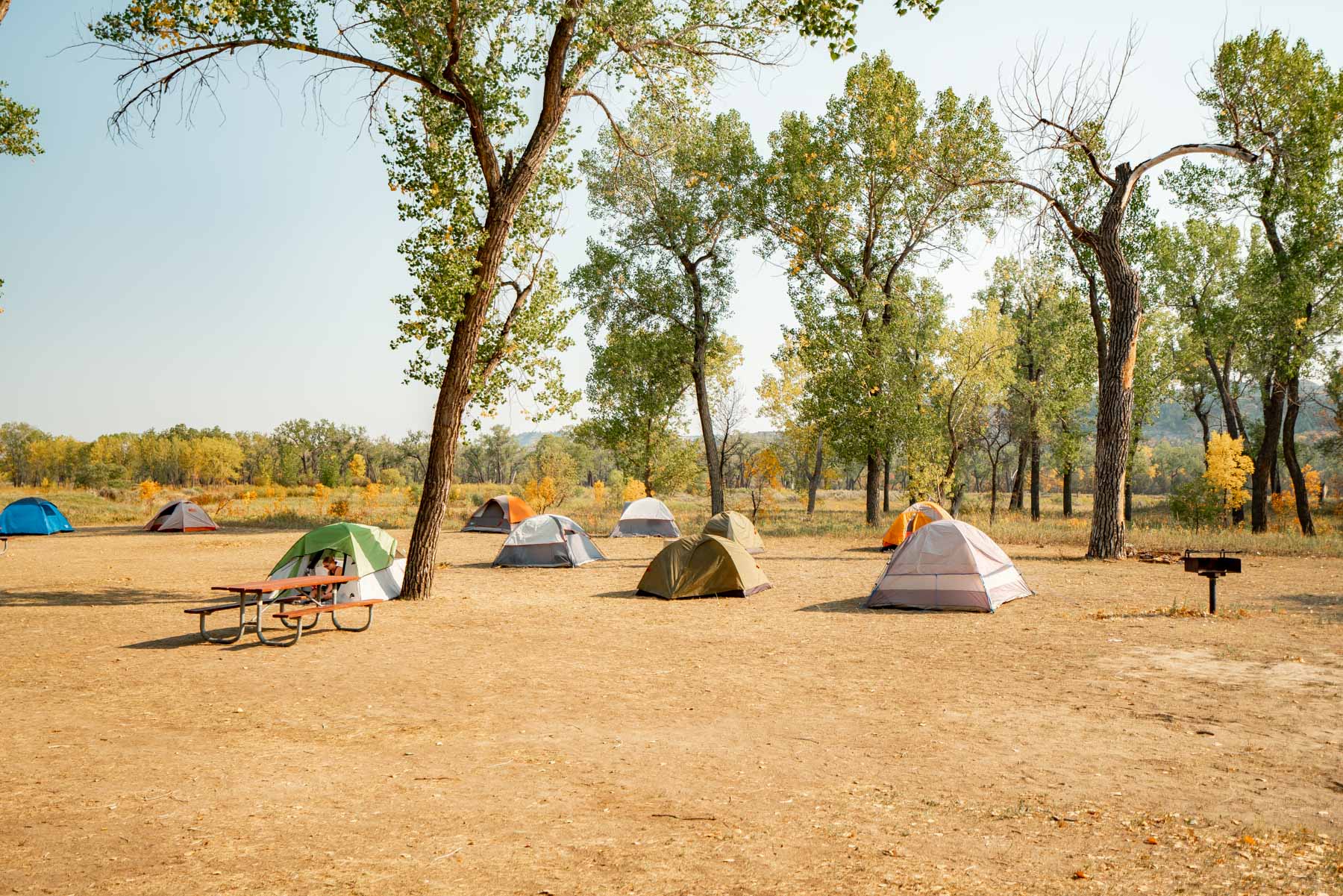
Where to Stay at Theodore Roosevelt: Hotels & Lodging
There are no lodges located within the boundaries of Theodore Roosevelt National Park. However, there are plenty of lodging options located near the North & South Units of the park.
For the South Unit, look no further than the town of Medora which is located on the border of the park. For the North Unit, Watford City is a quick 20 minute drive.
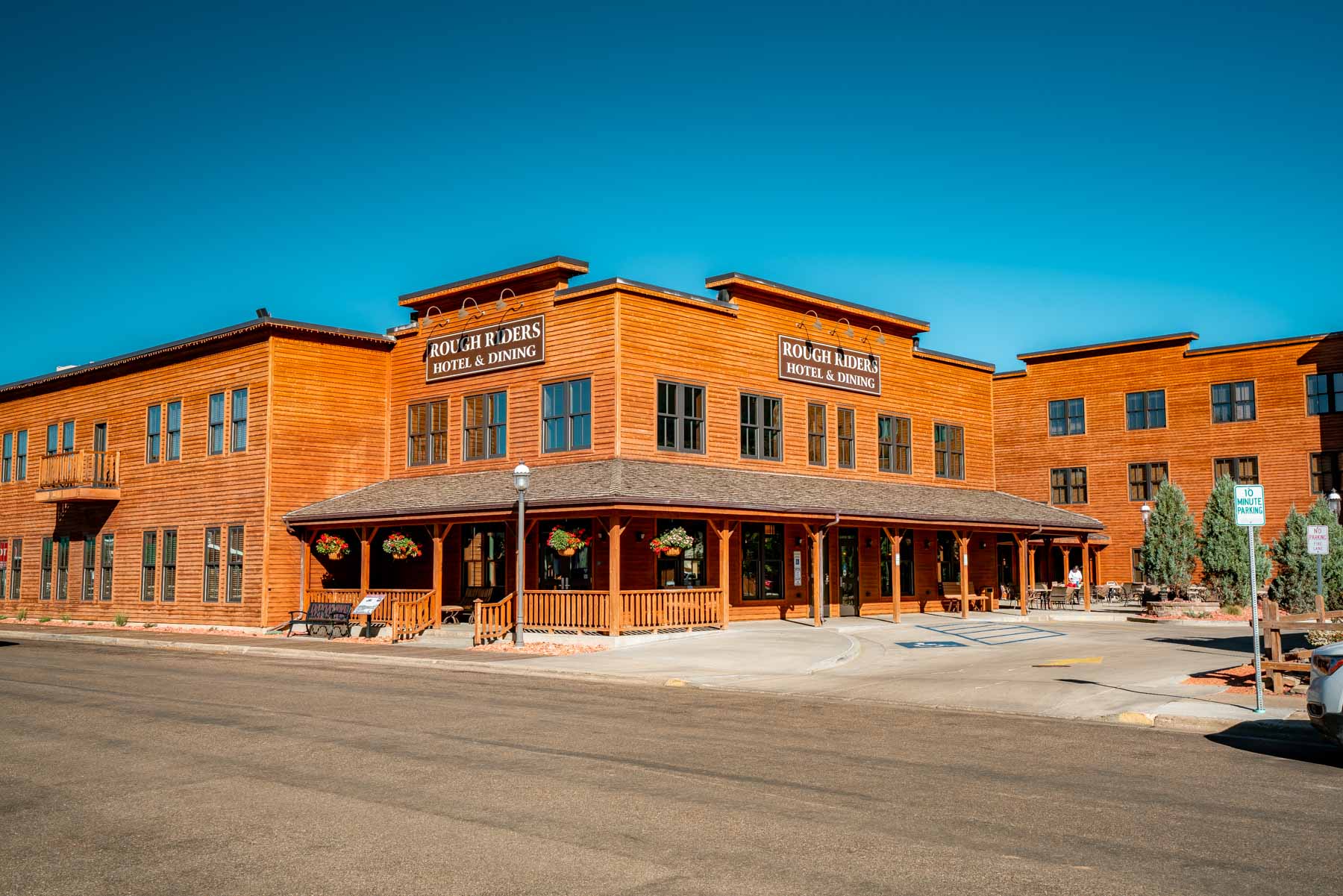
South Unit Hotels – Medora
North Unit Hotels – Watford City
- Little Missouri Inn & Suites (we stayed here and enjoyed it)
- Teddy’s Residential Suites
- Roosevelt Inn & Suites
- The Watford
- Comfort Inn & Suites
Theodore Roosevelt National Park Photos
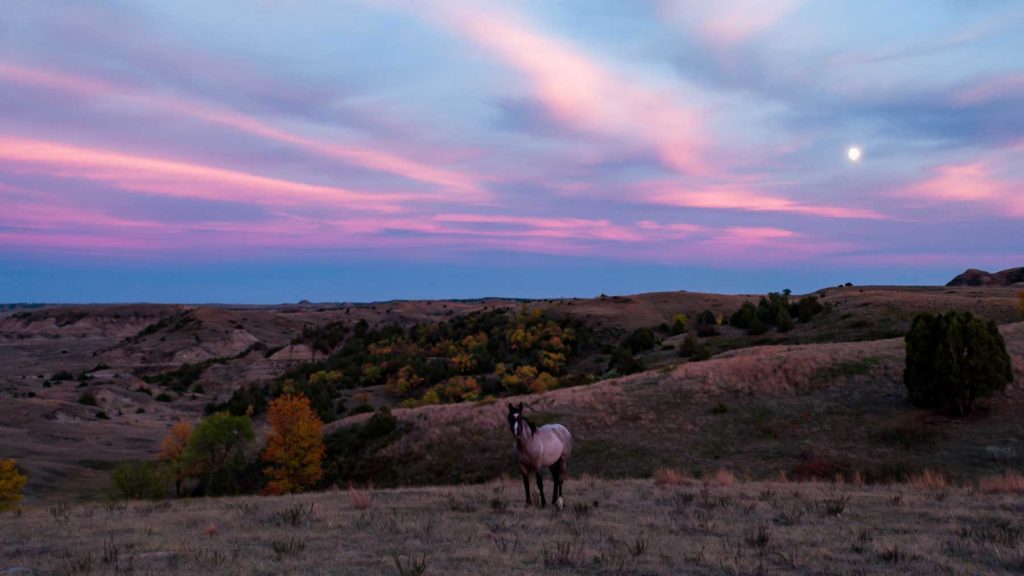
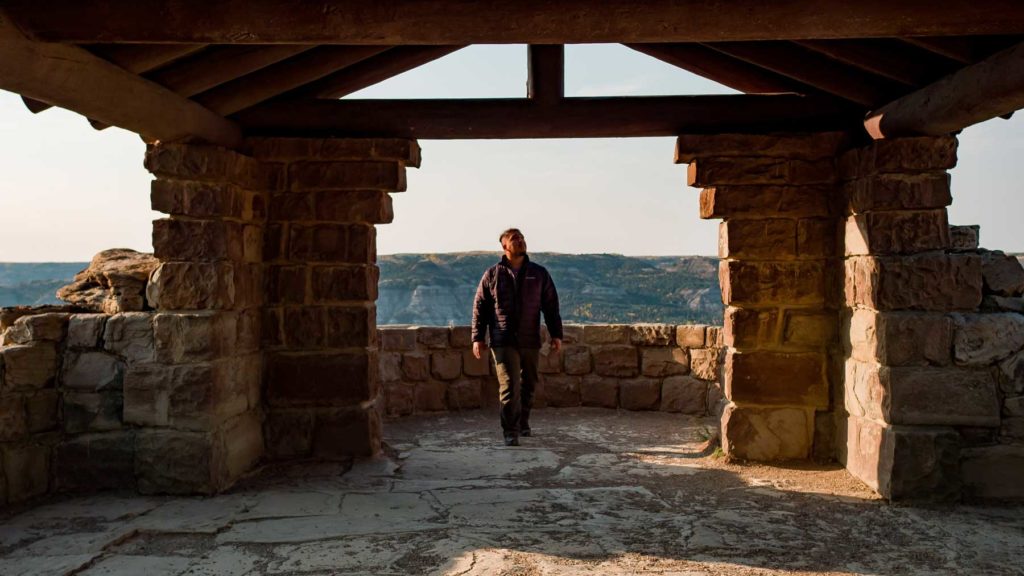
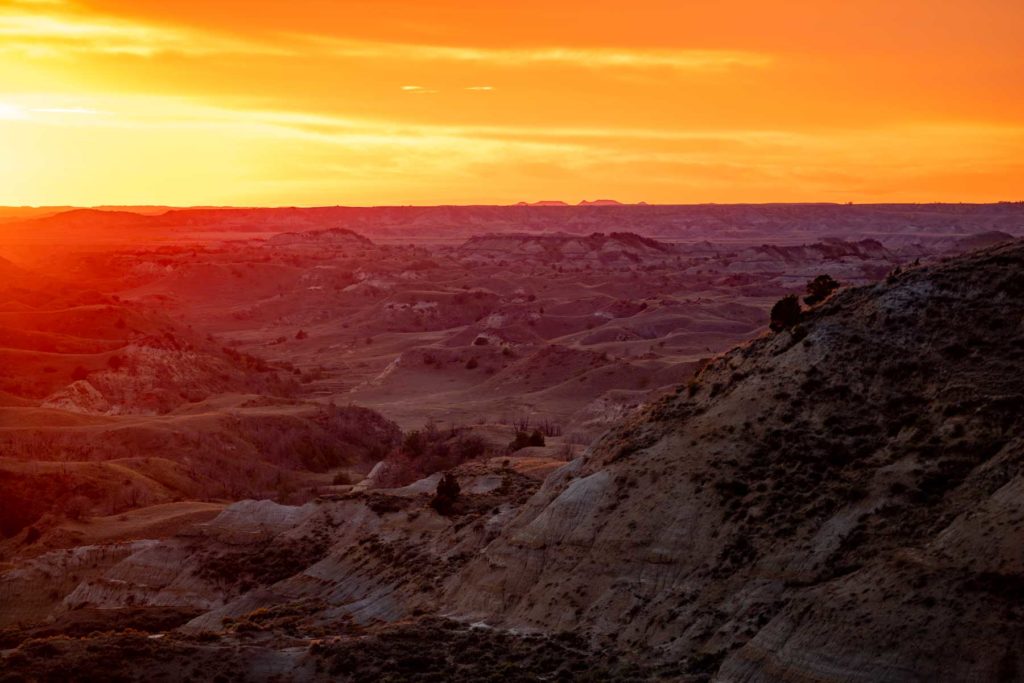
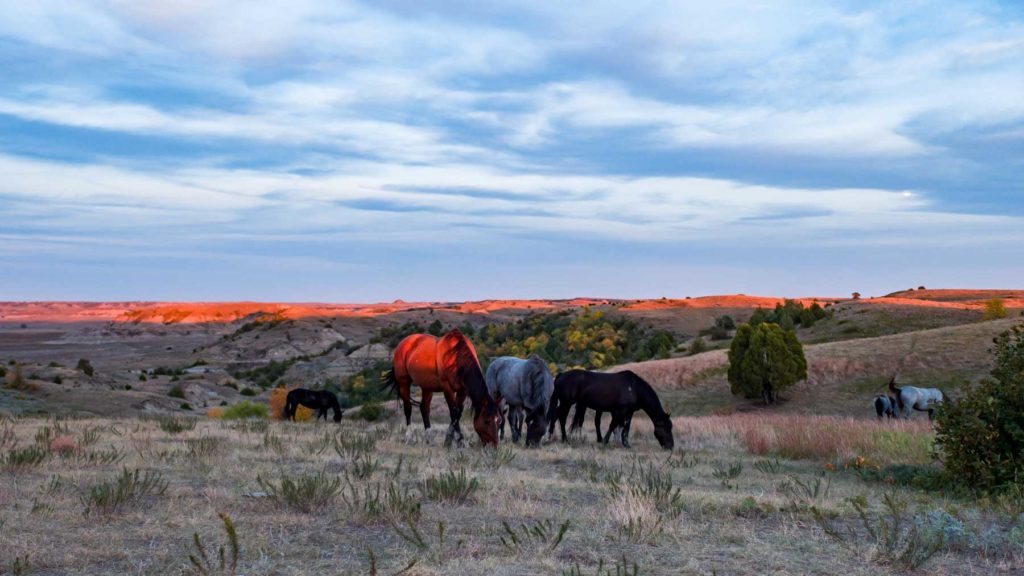

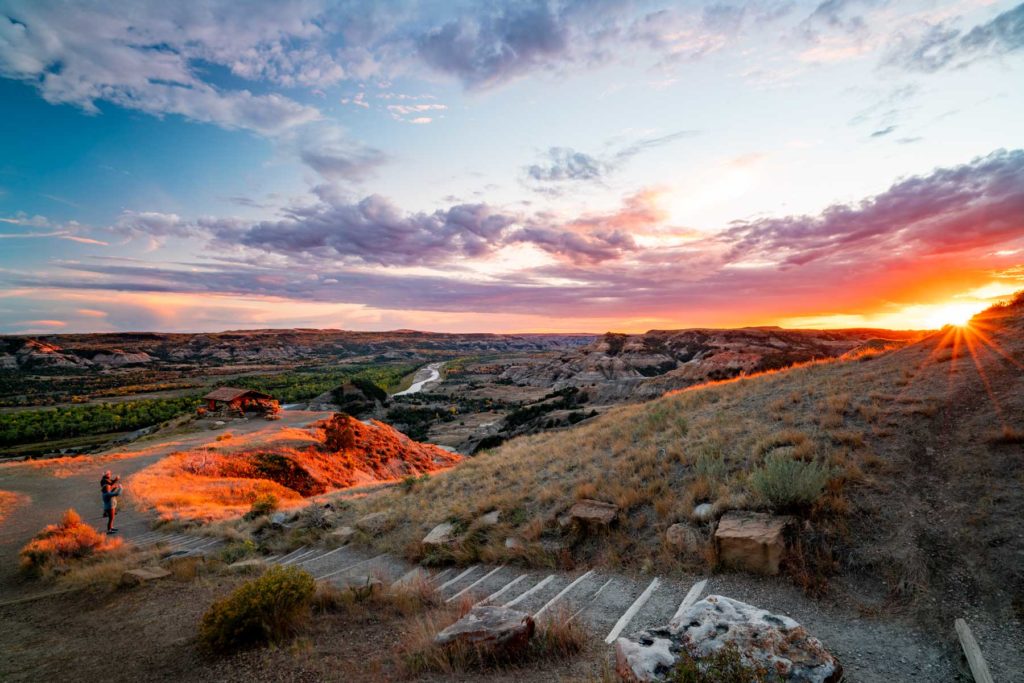
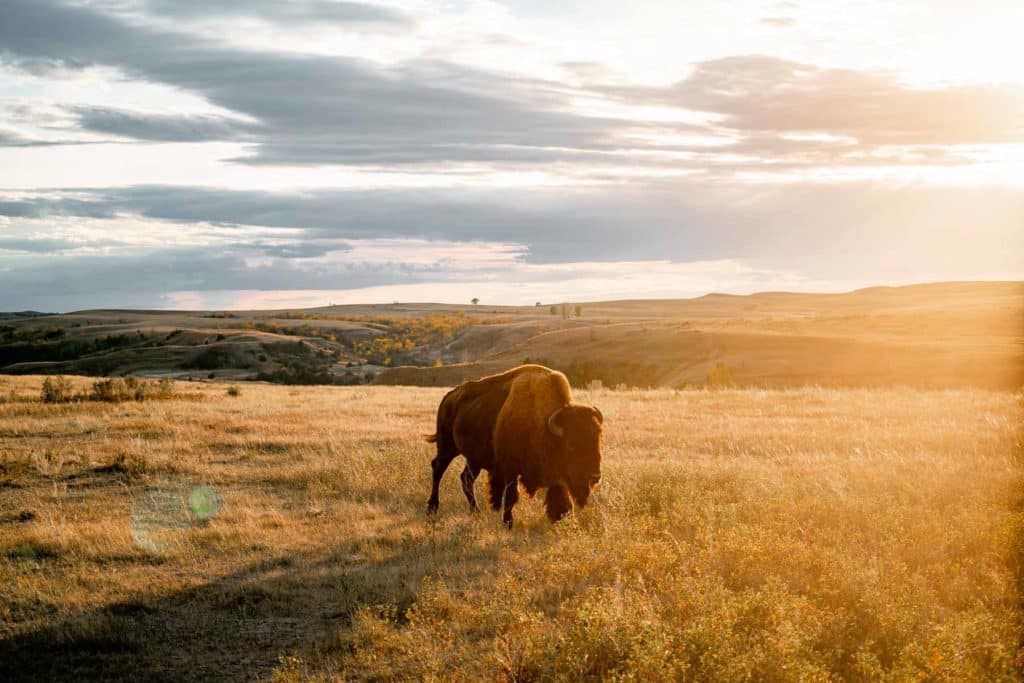
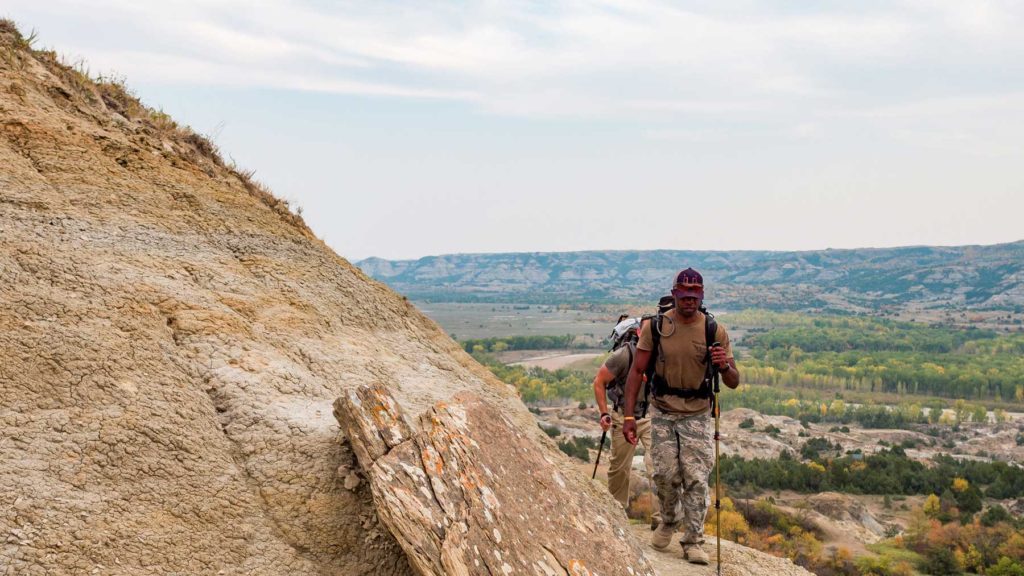
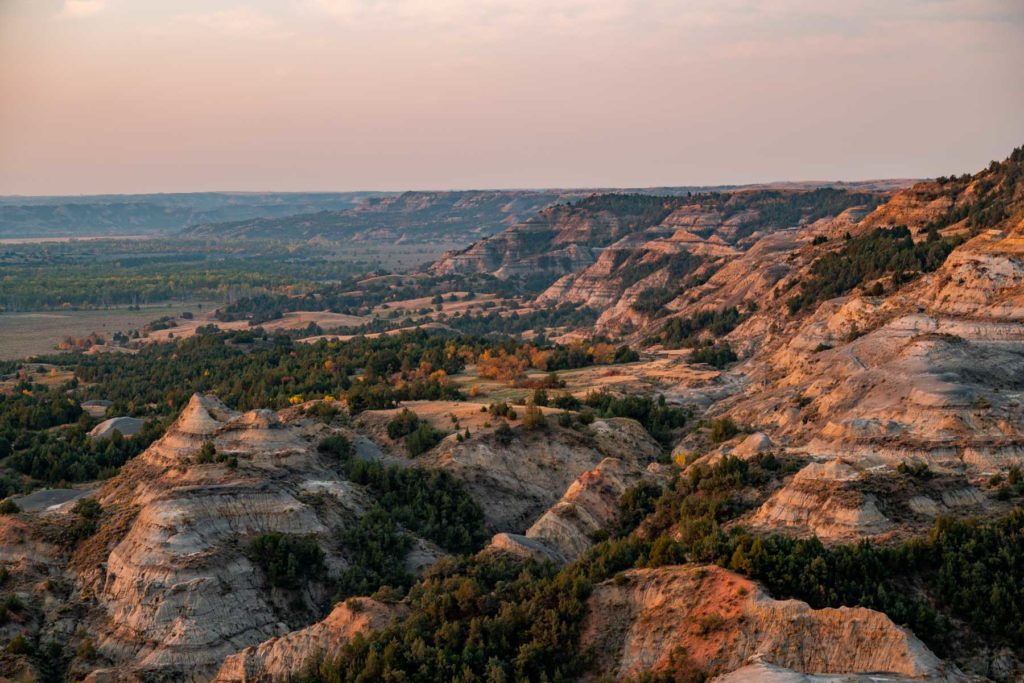
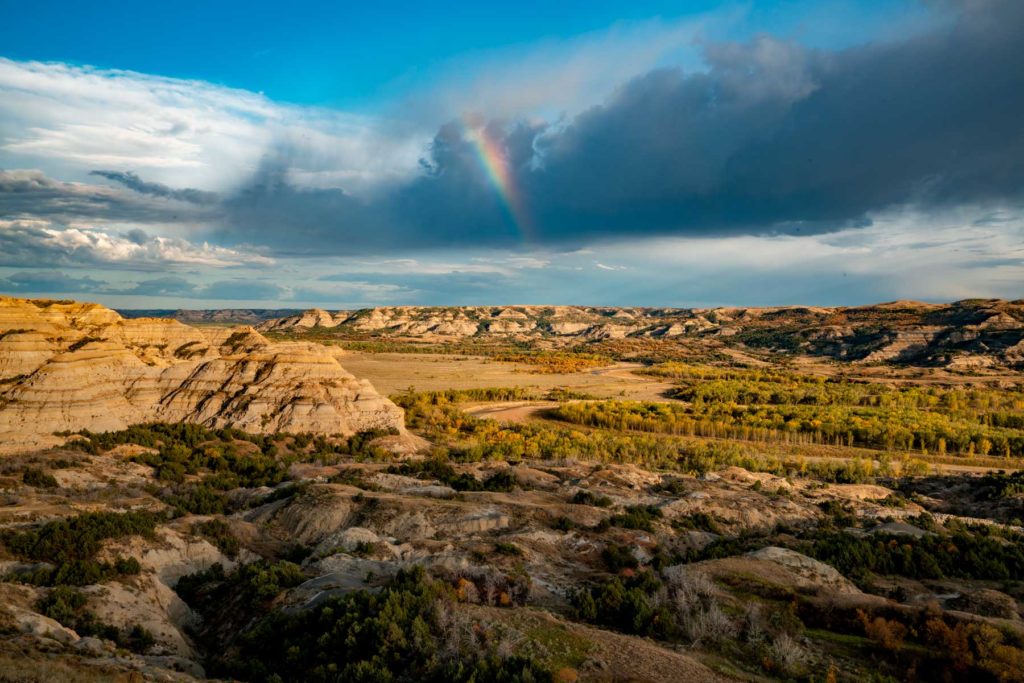
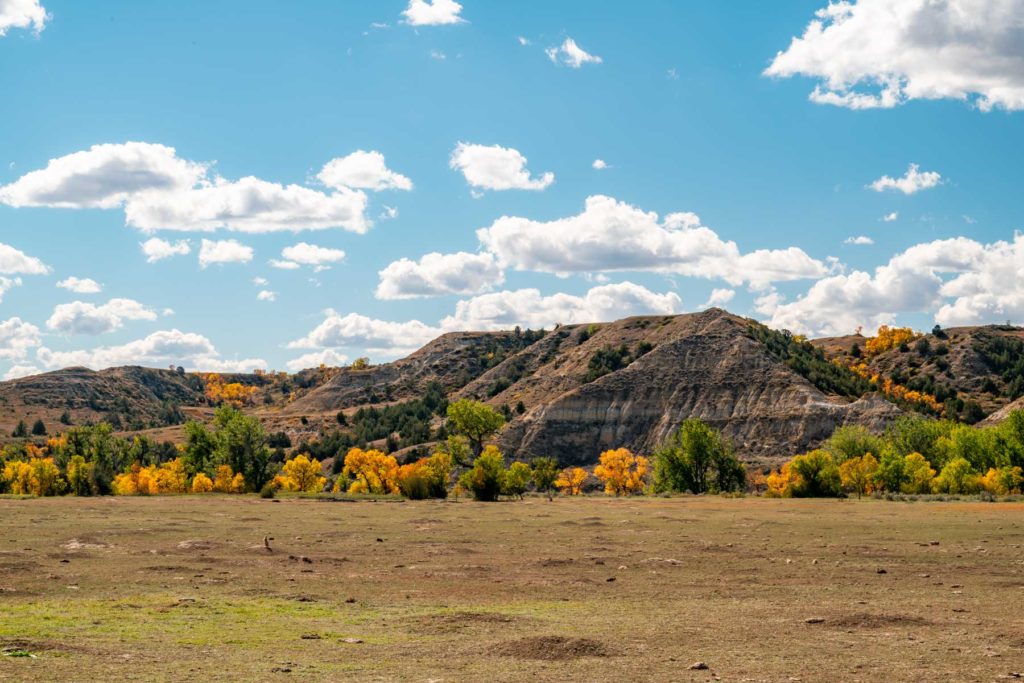
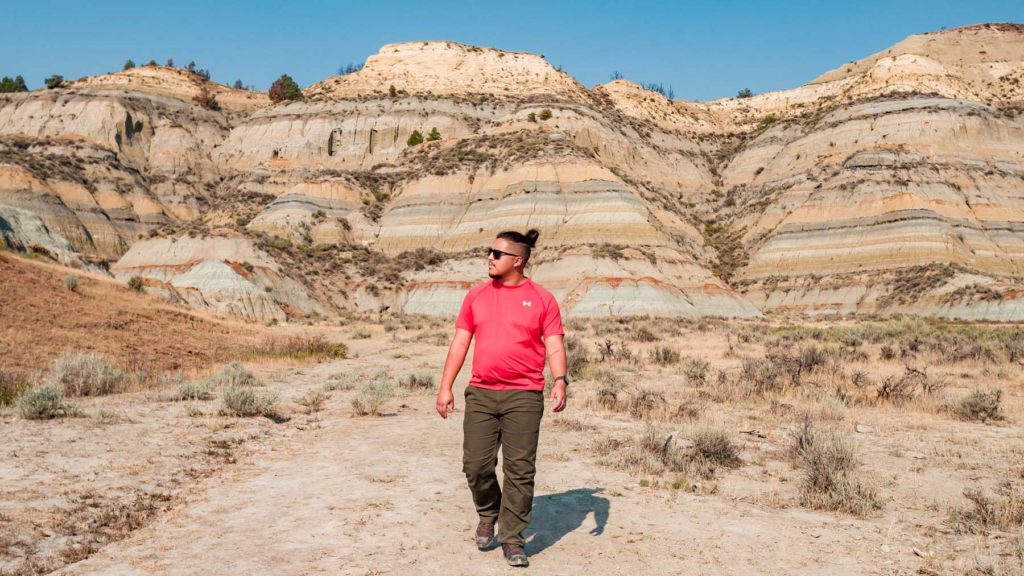

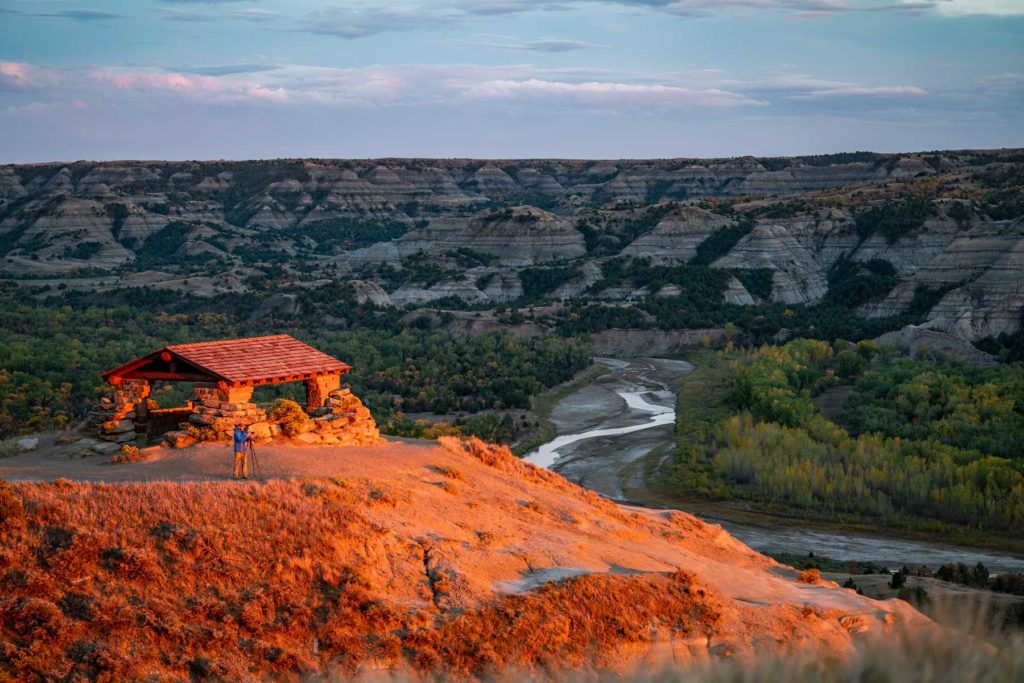
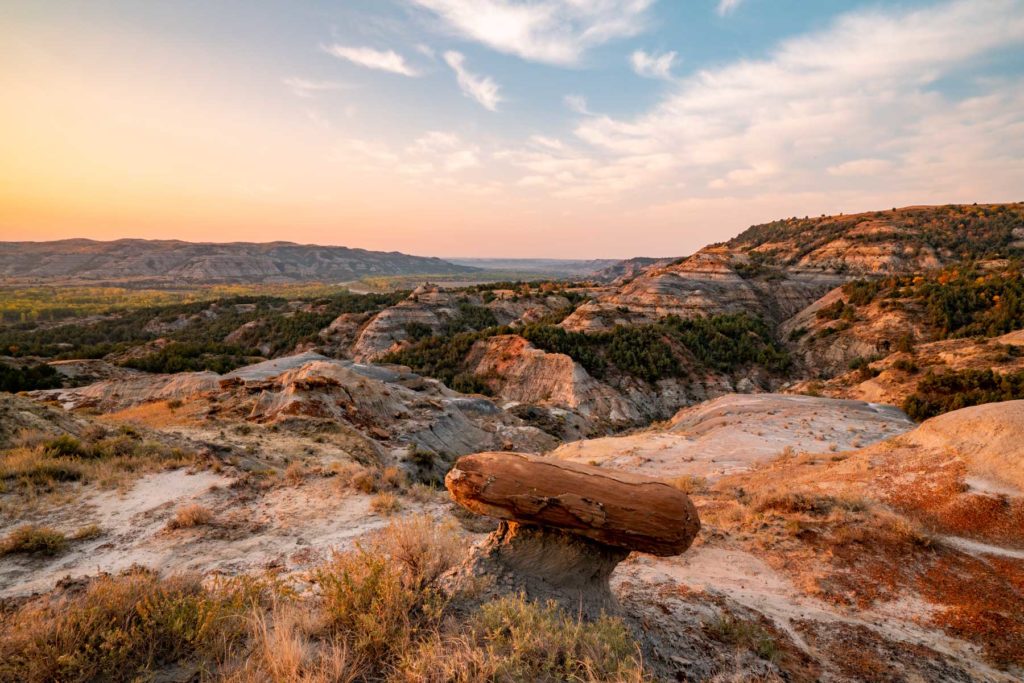
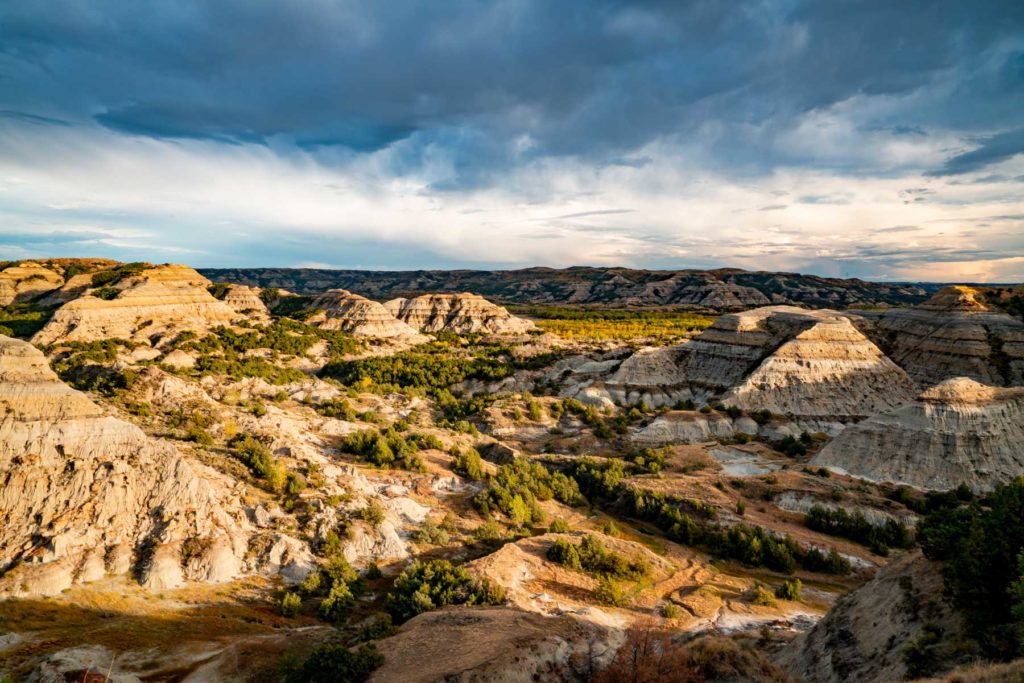
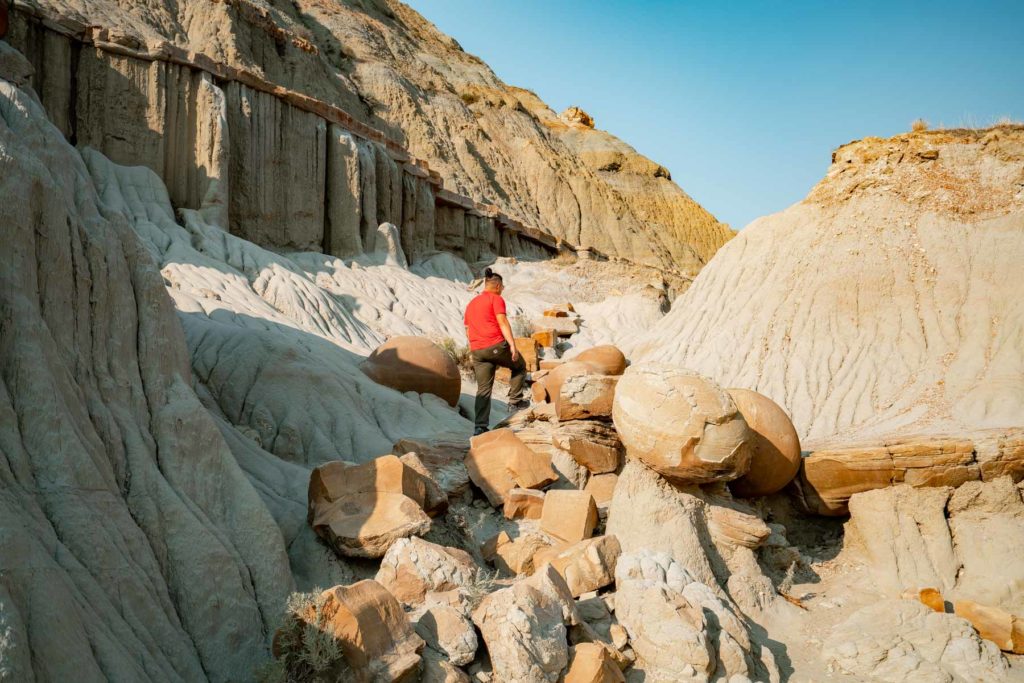
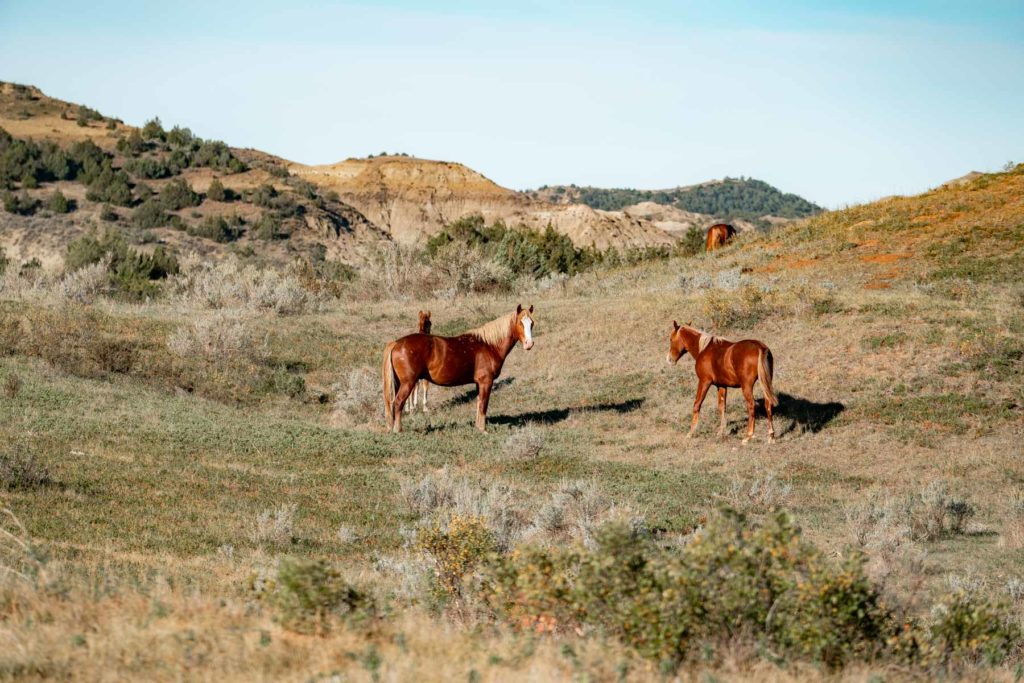
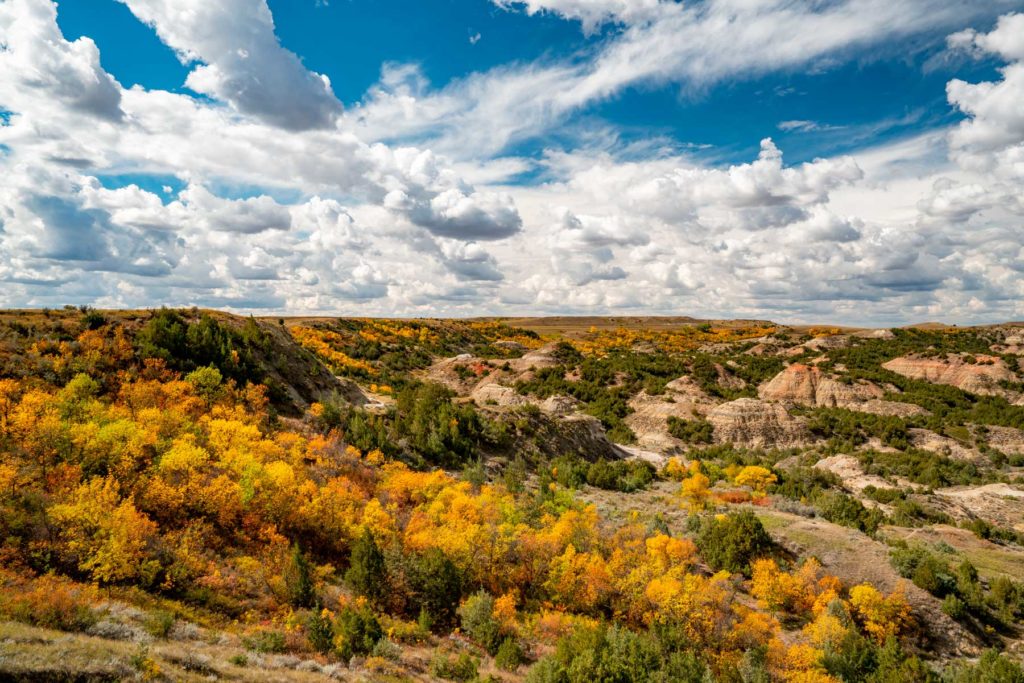
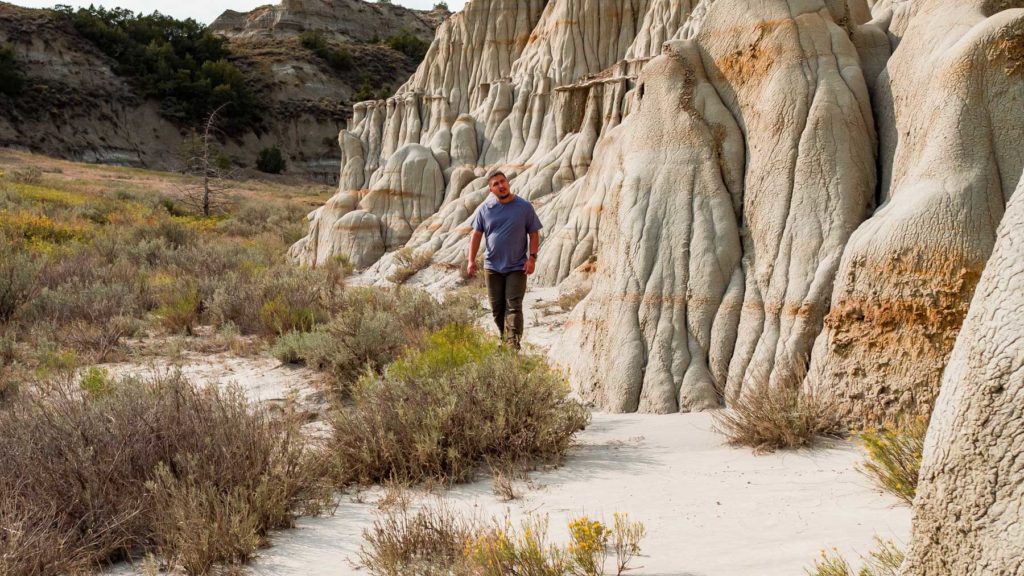

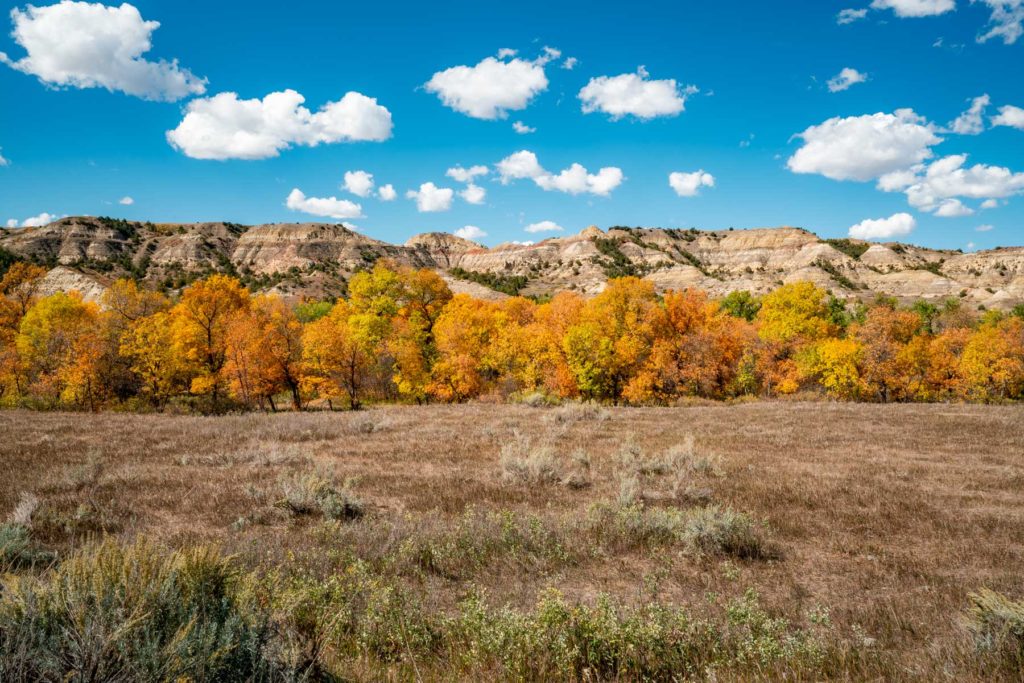
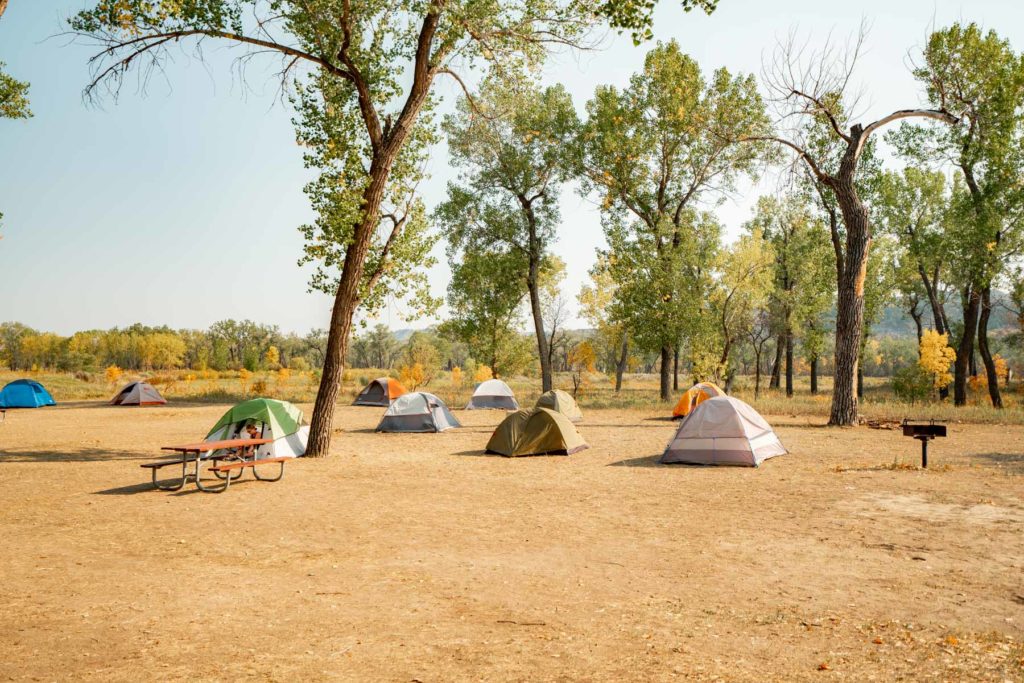
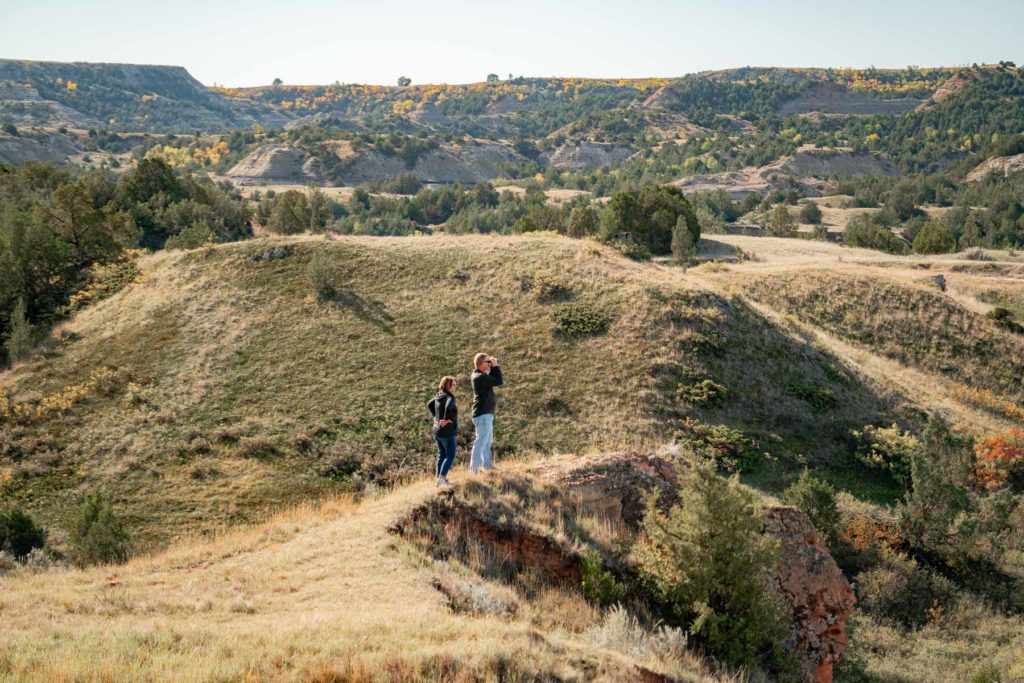

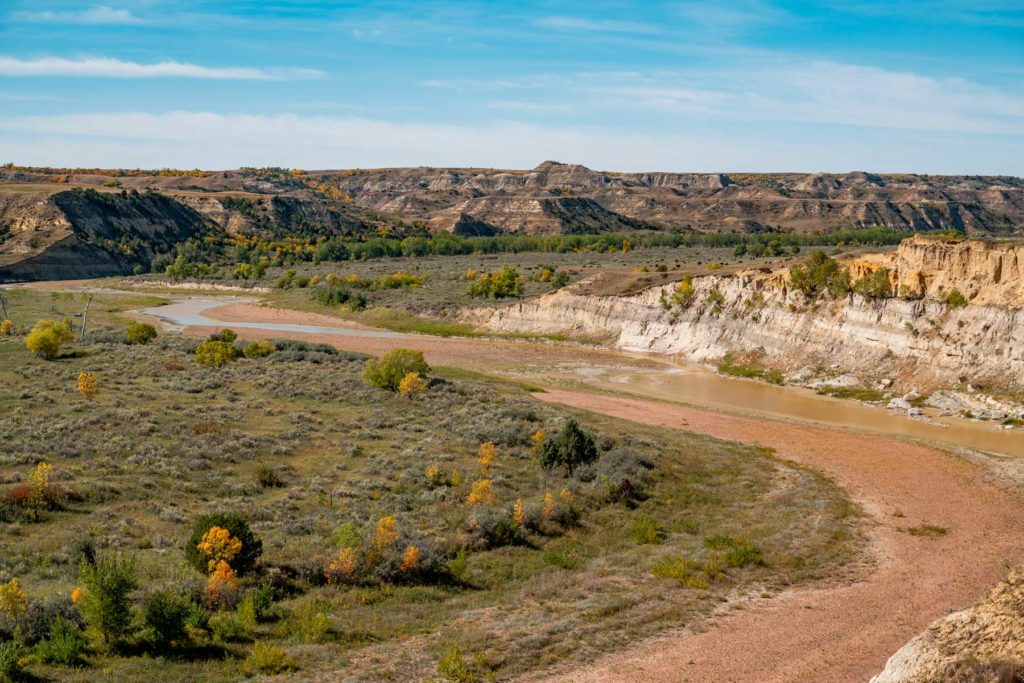
More Places to See Near Theodore Roosevelt

- Medora is located at the entrance station for the South Unit of the park and is definitely worth a stop.
- Little Missouri National Grassland which is managed by the US Forest Service encompasses some beautiful areas surrounding the national park.
- Maah Daah Hey Trail is a world-renowned bike trail that crosses through the park in places and is spectacular.
Summary | Leave us a Comment!
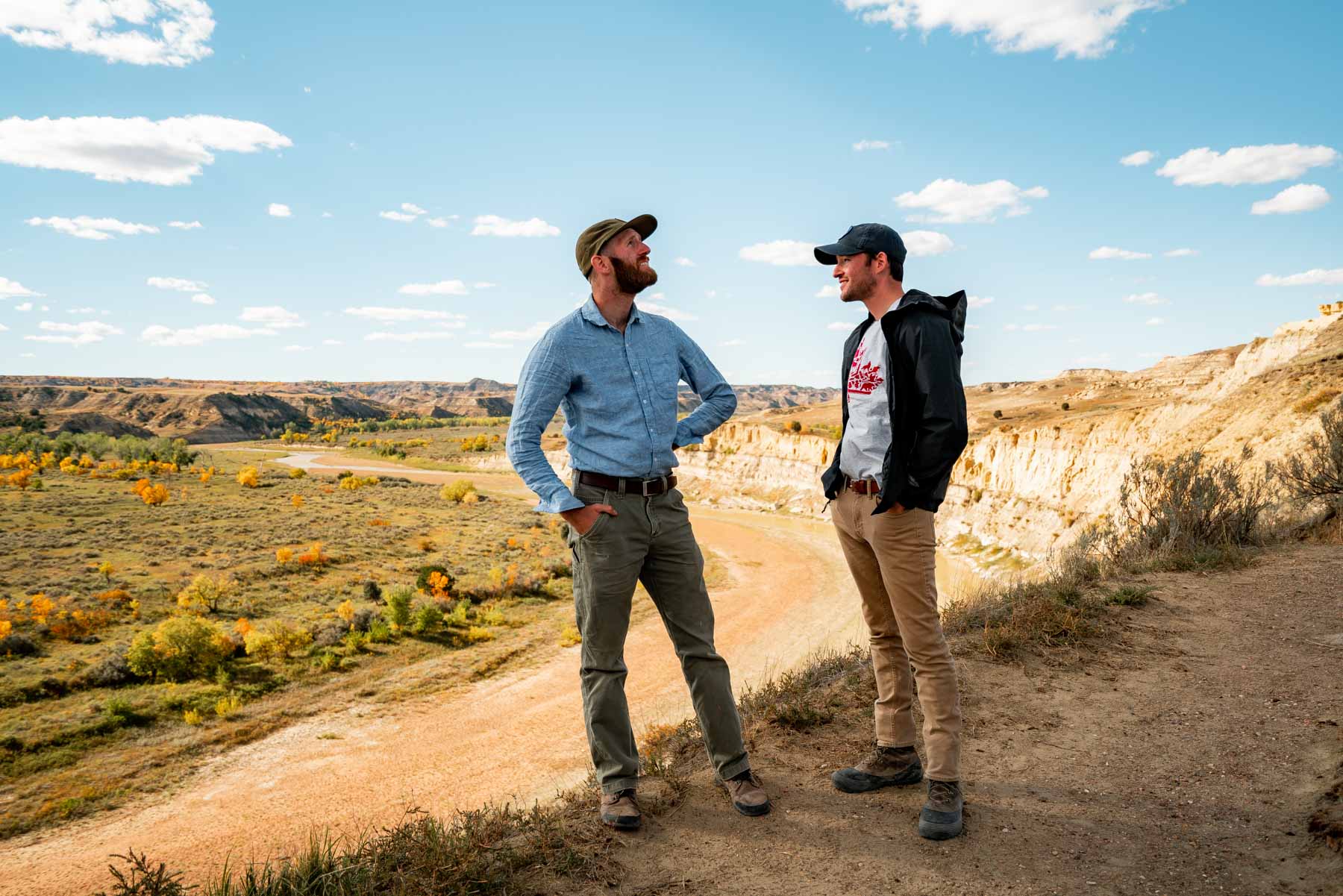
That’s a wrap folks! Hopefully you feel like you’ve got a good handle on your next trip to Theodore Roosevelt National Park. Please leave me a comment below and let me know if you have any questions or comments.
Hope to see you on the trails sometime soon!
Here’s Some Related Posts
- North Dakota National Parks: 5 AMAZING North Dakota National Parks
- A (Very) Helpful Guide to BADLANDS NATIONAL PARK
- 20 (INCREDIBLE) Things to Do in Badlands National Park
- These 4 Colorado National Parks Will Blow Your Mind
- EPIC Guide to All of Alaska’s National Parks
- ALL 63 National Parks Ranked from Best to Worst 2021
- 10 Best National Parks Road Trips in America
- Washington’s National Parks are the Best in the World – Complete Guide
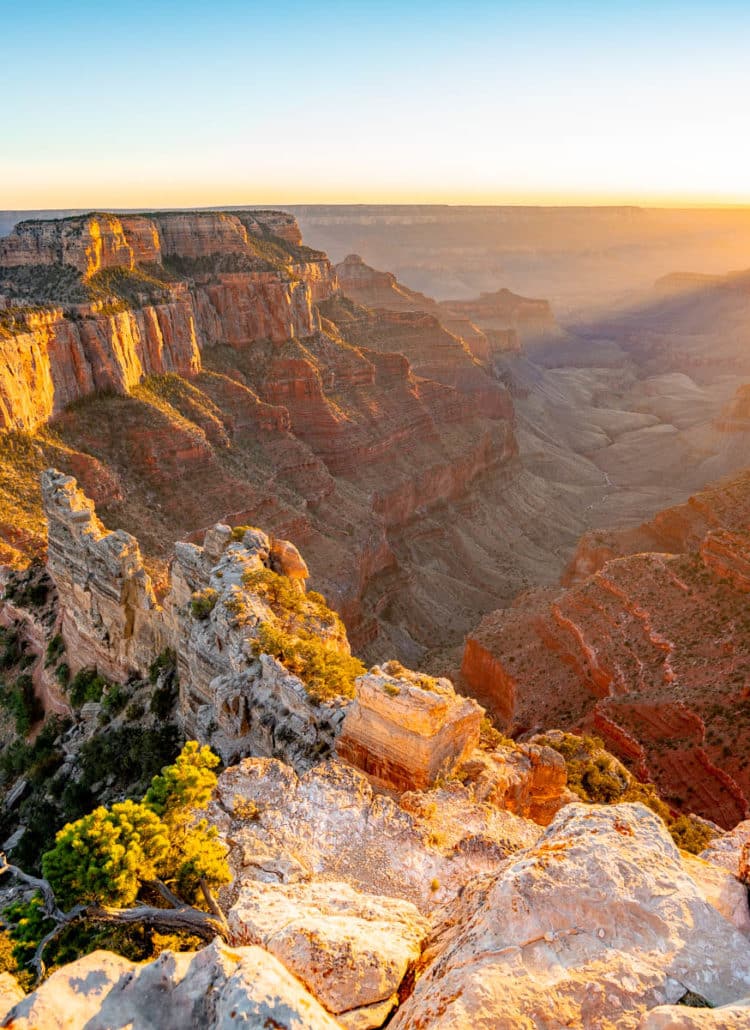
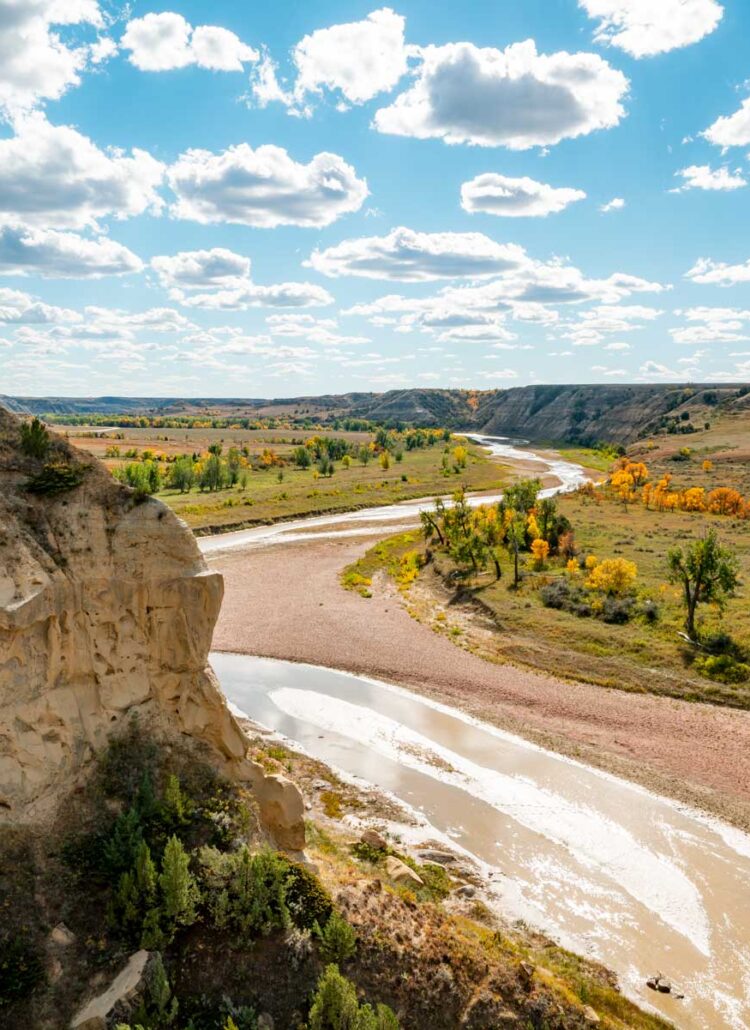
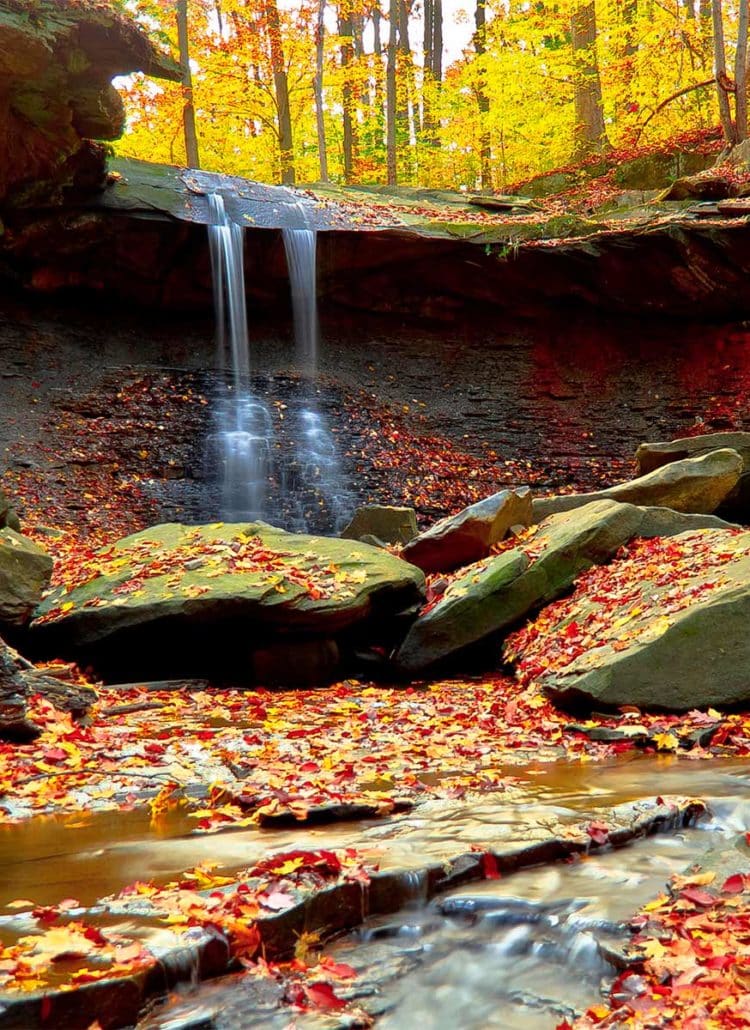
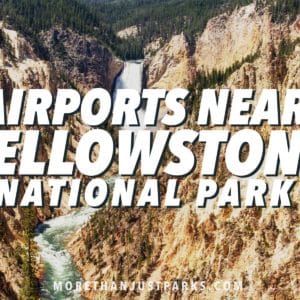

We were at Teddy Roosevelt NP last September. What a gem!
It really is! Thanks Kathy 🙂
You are a joy and you are #1. Cant wait to read more on your site. Your friend in Bailby .
Thank you Vickie! Really appreciate the kind words.
Cheers,
Will